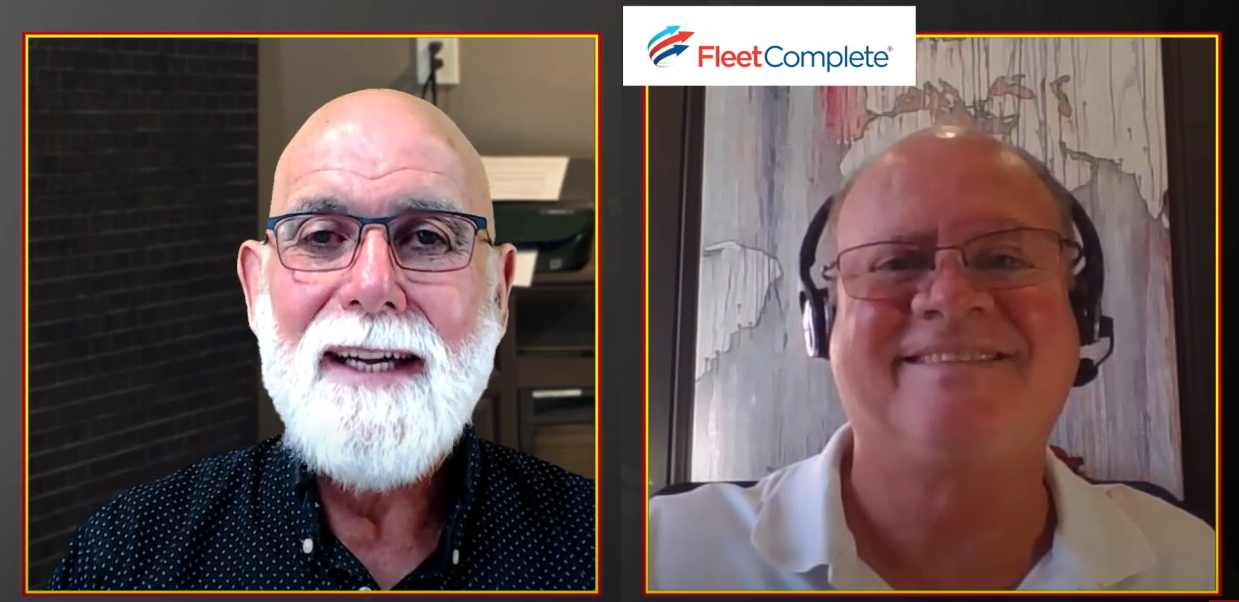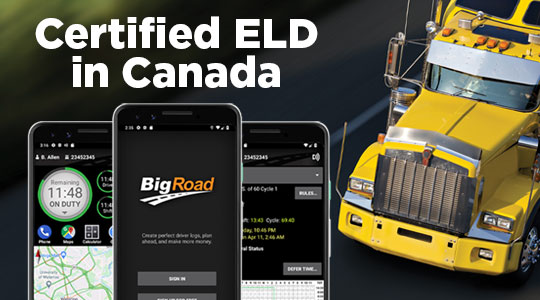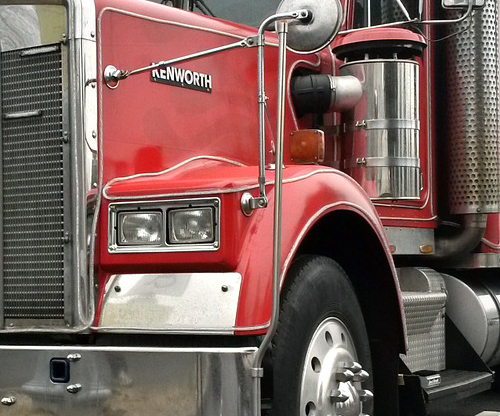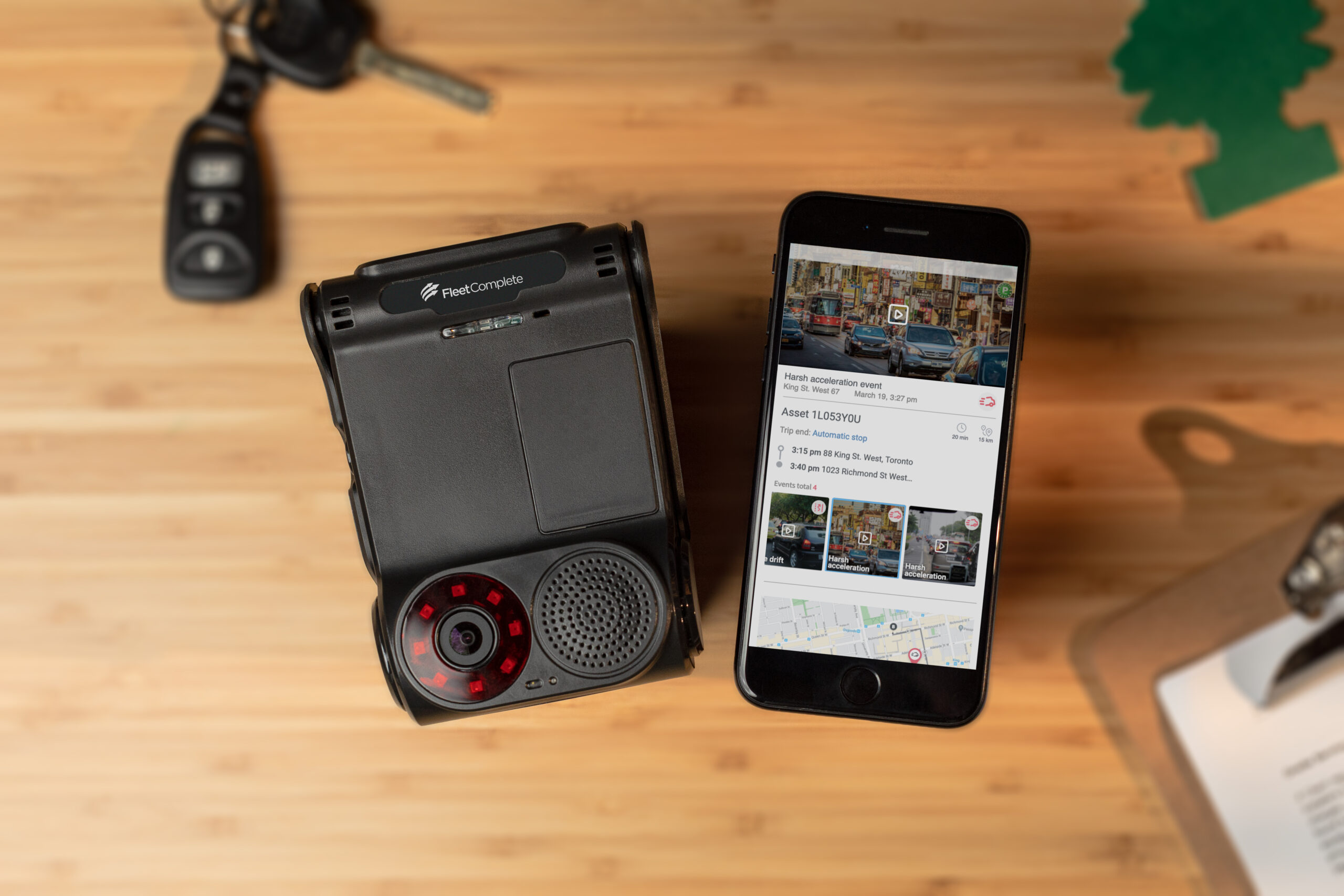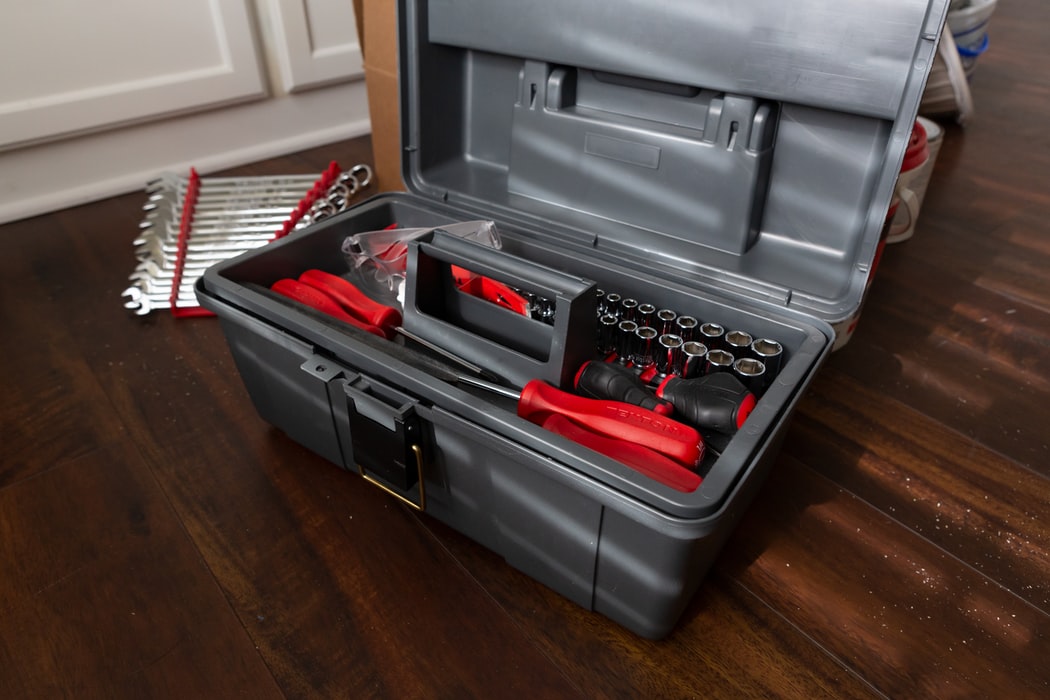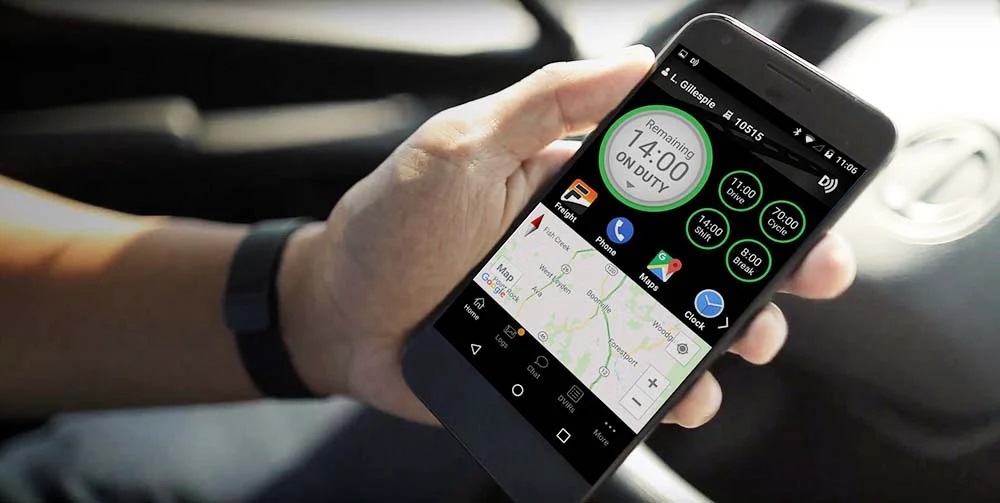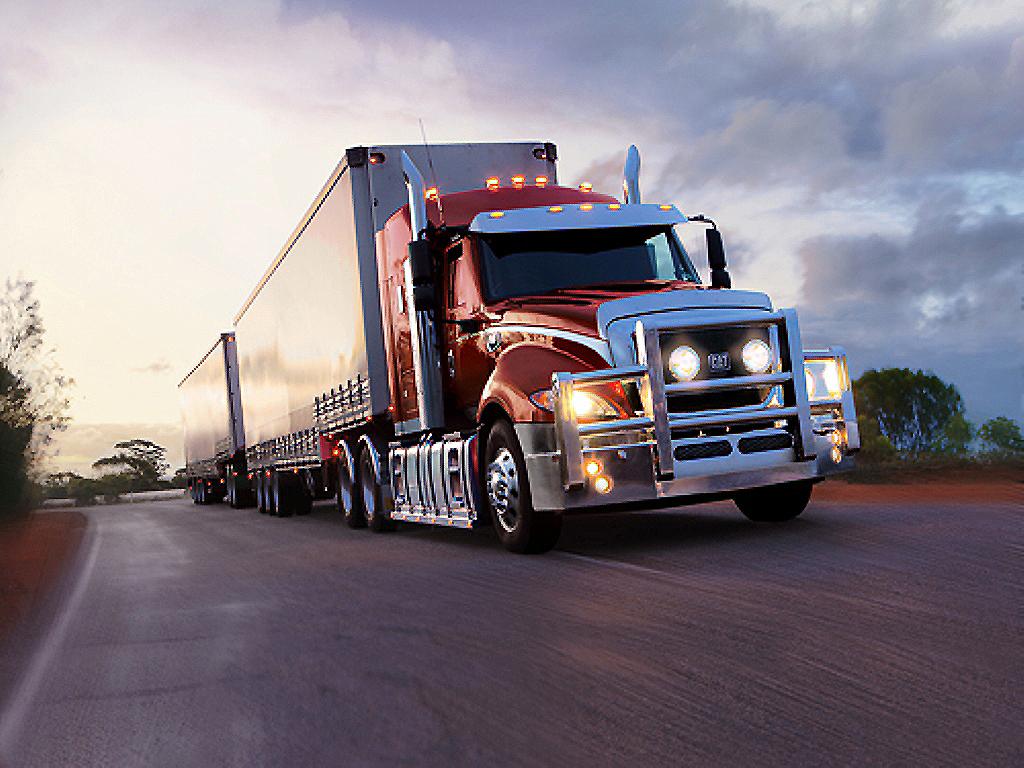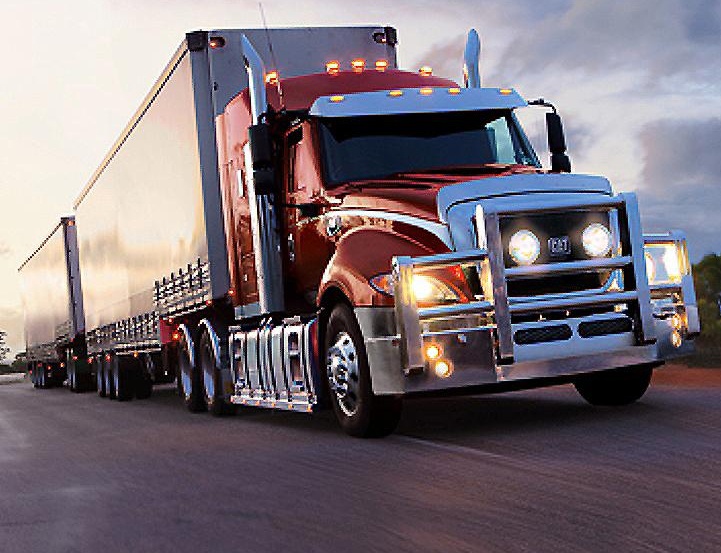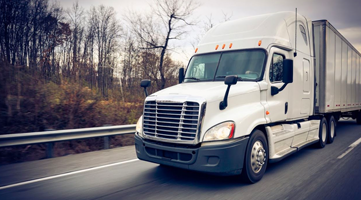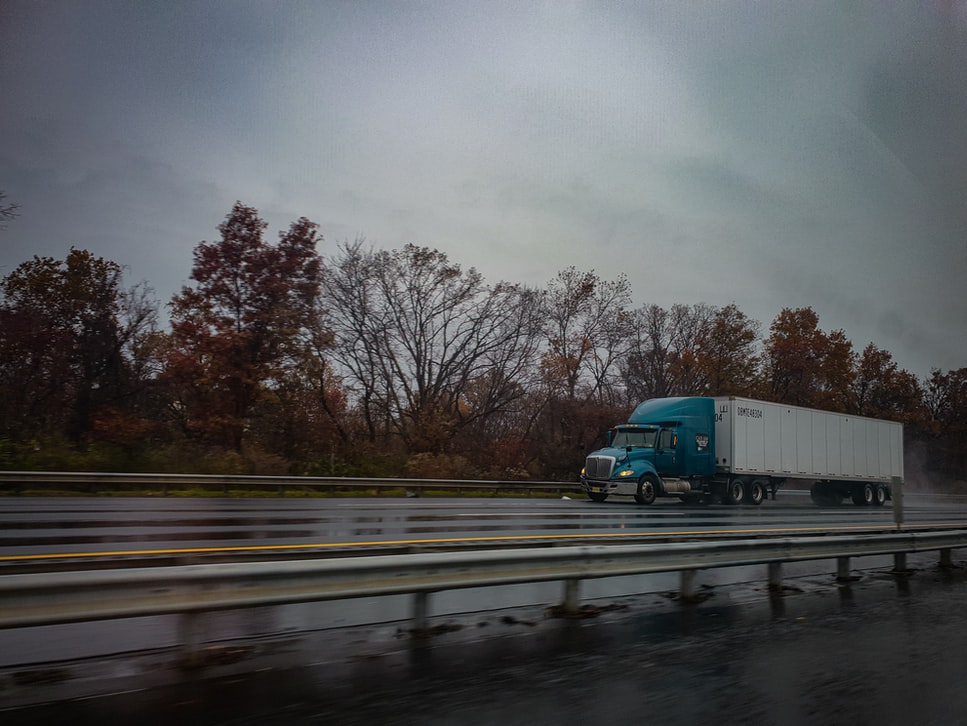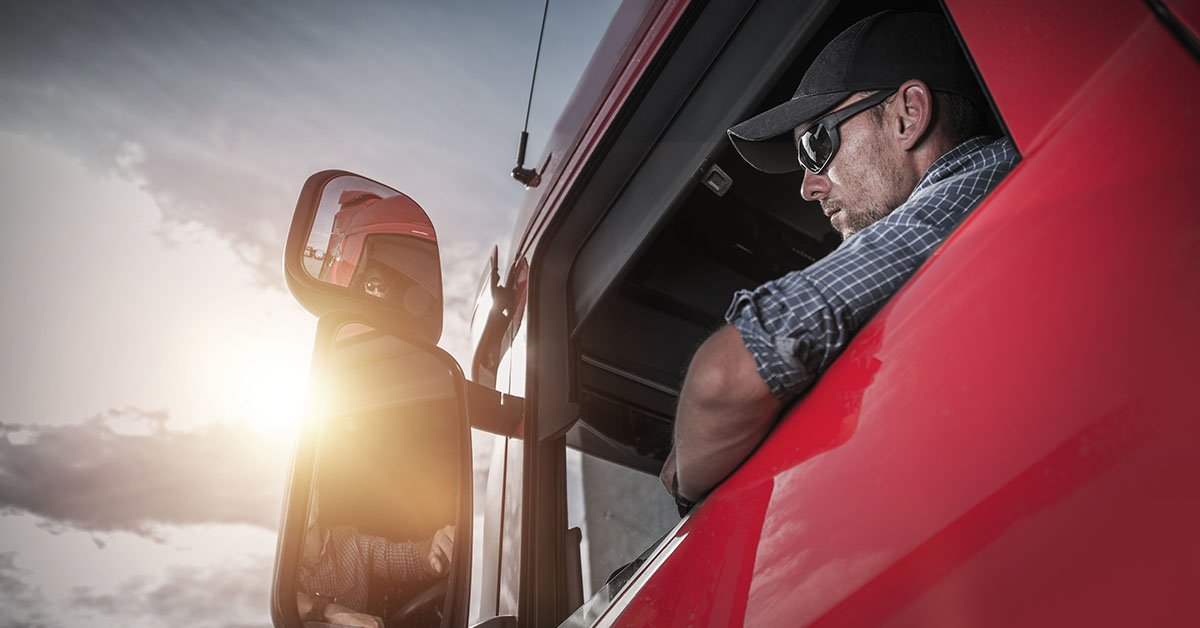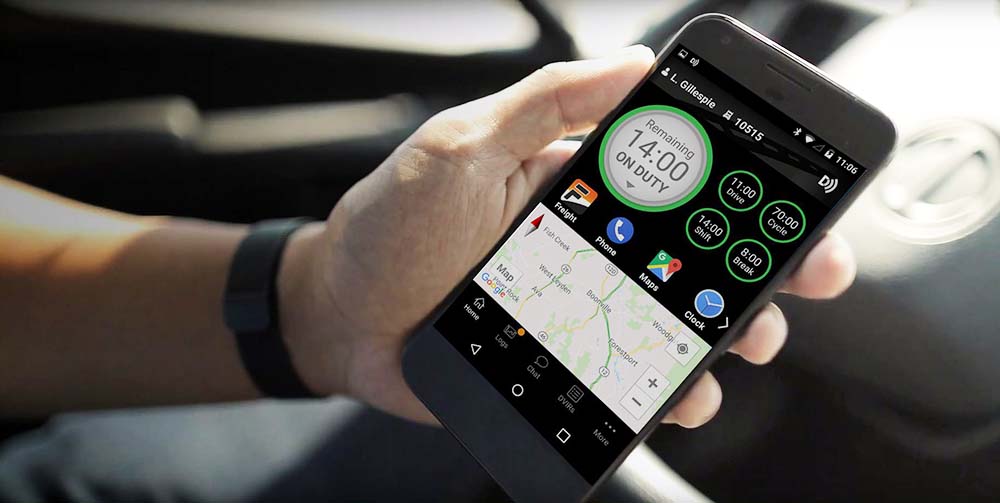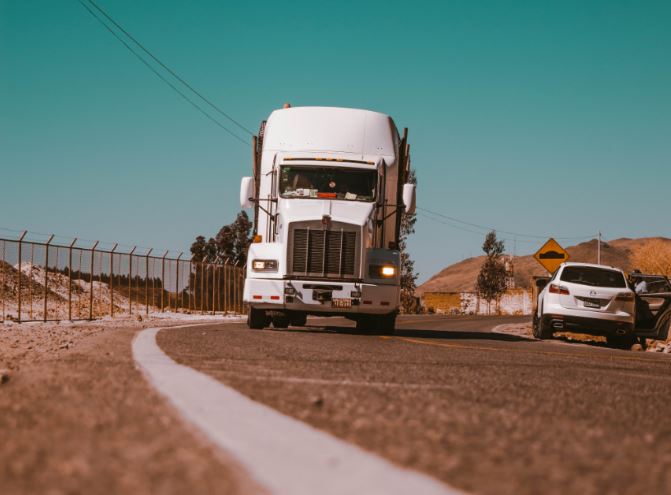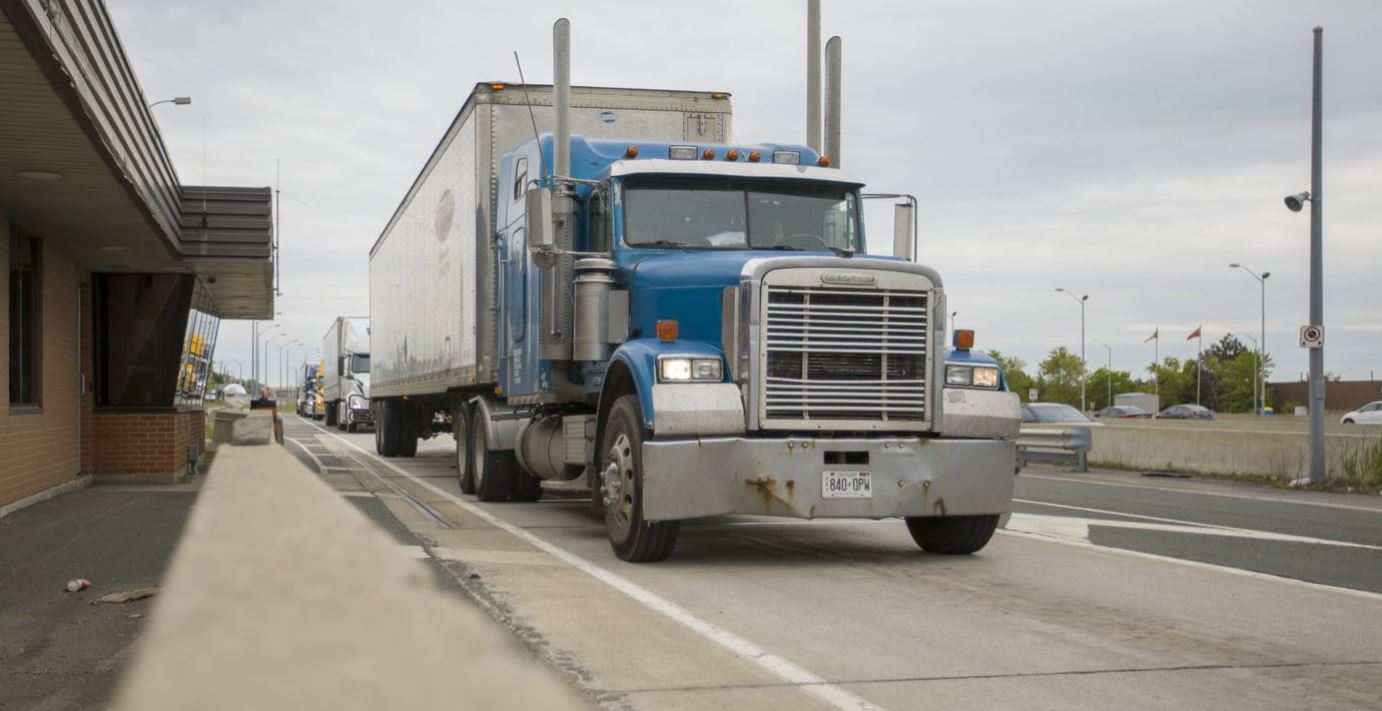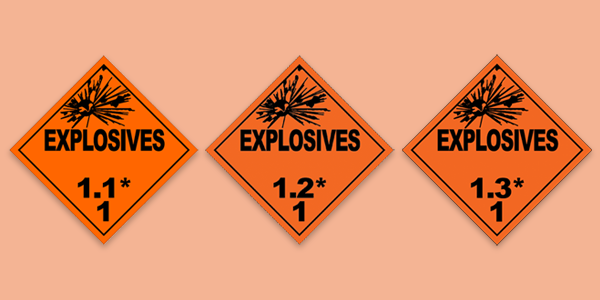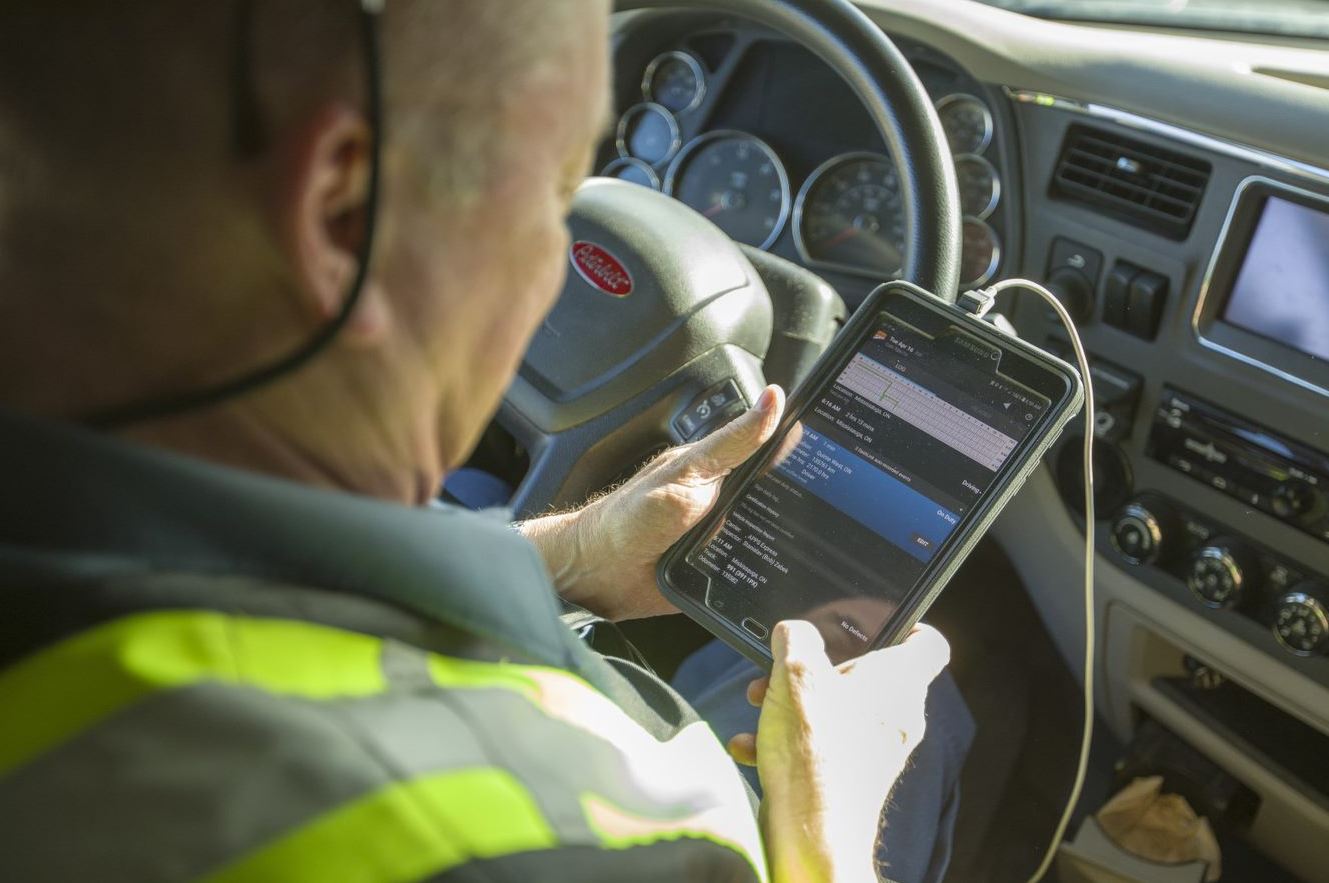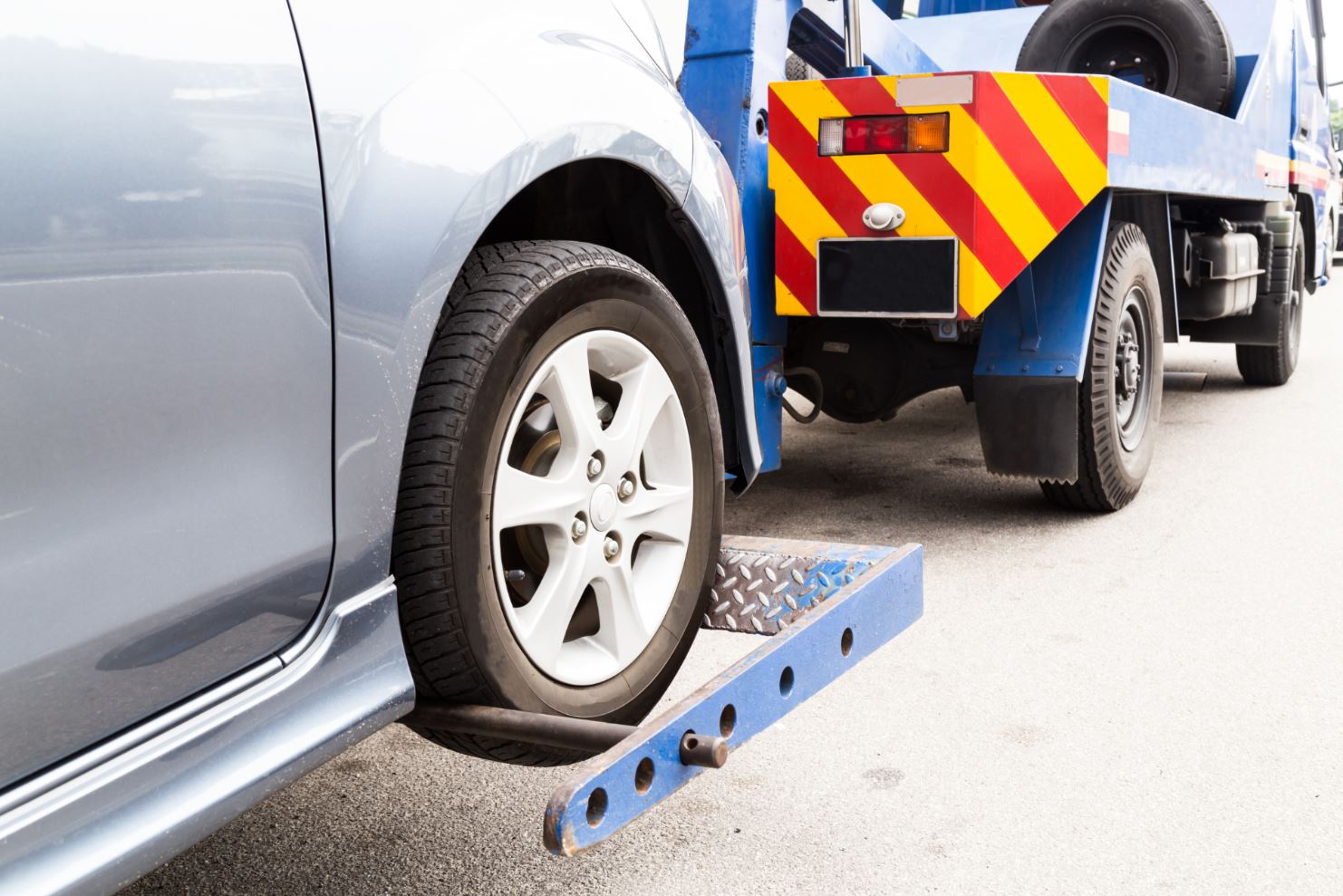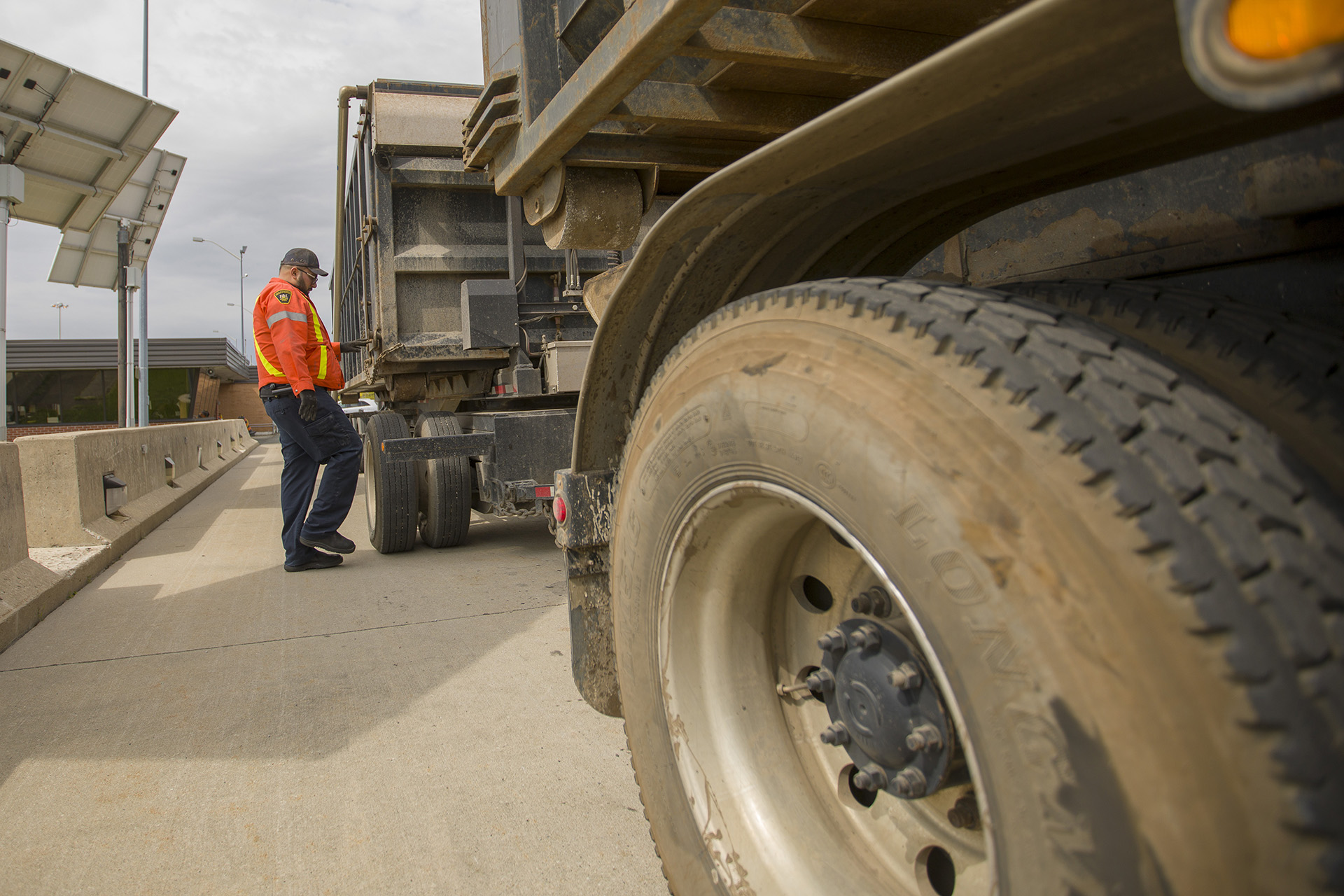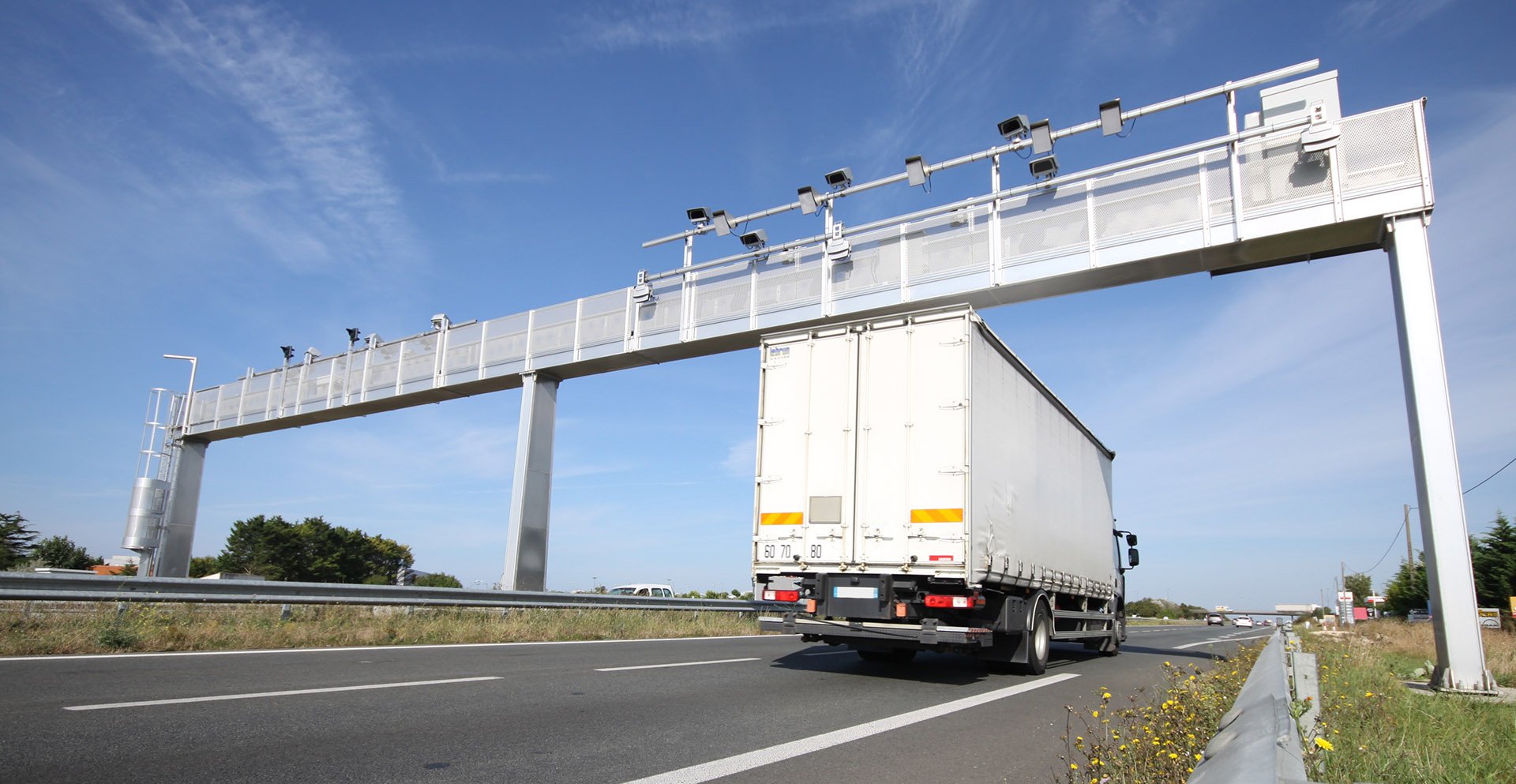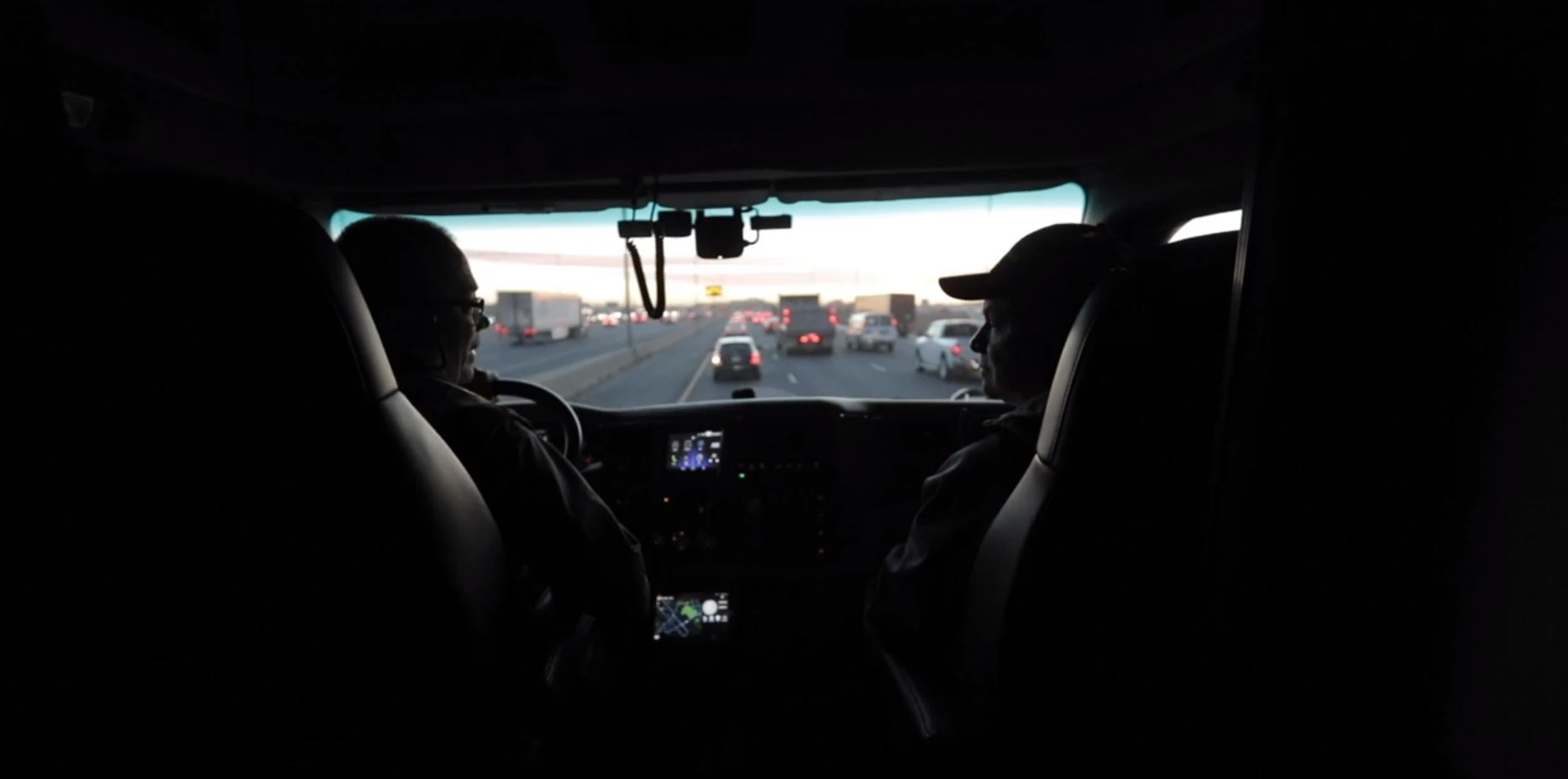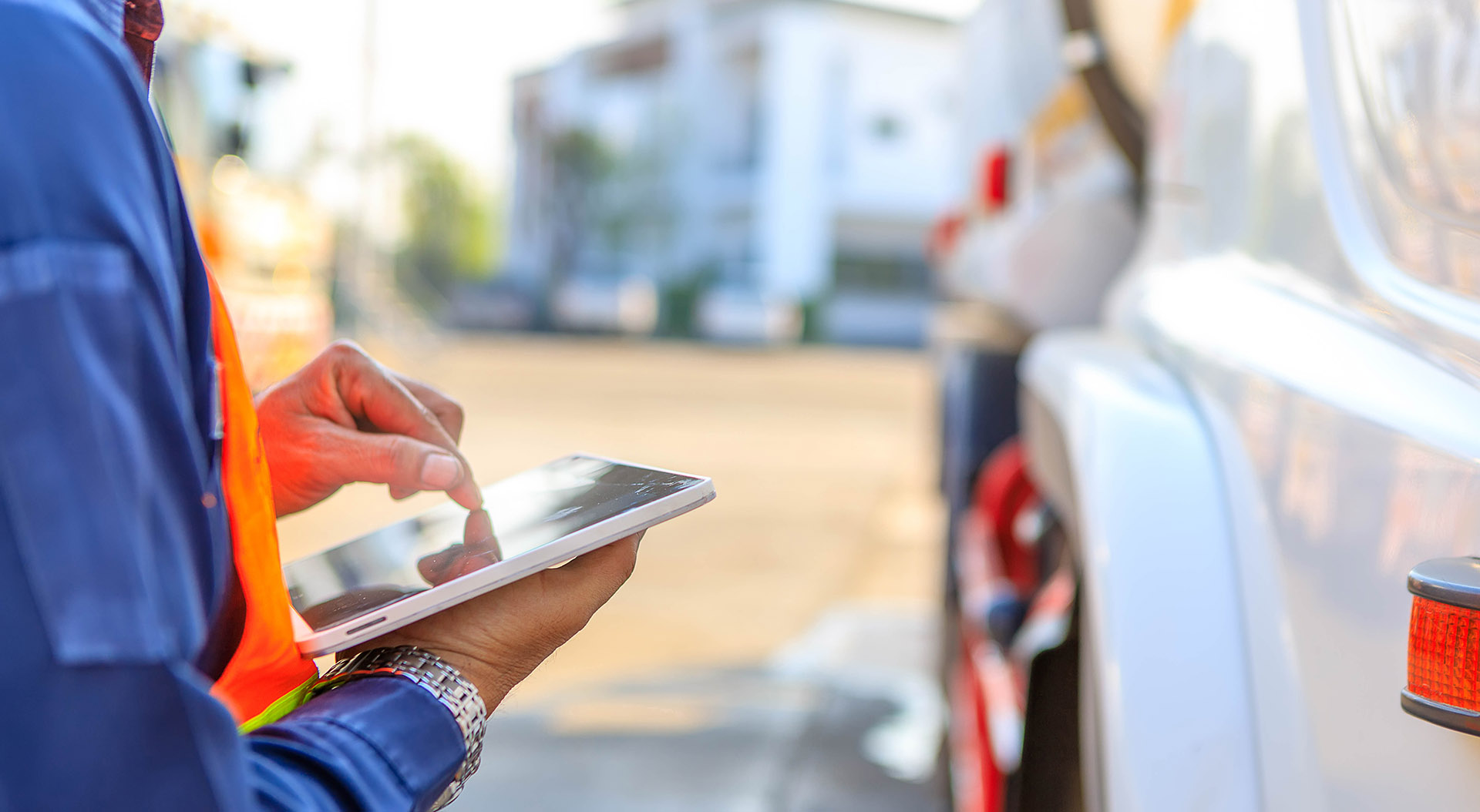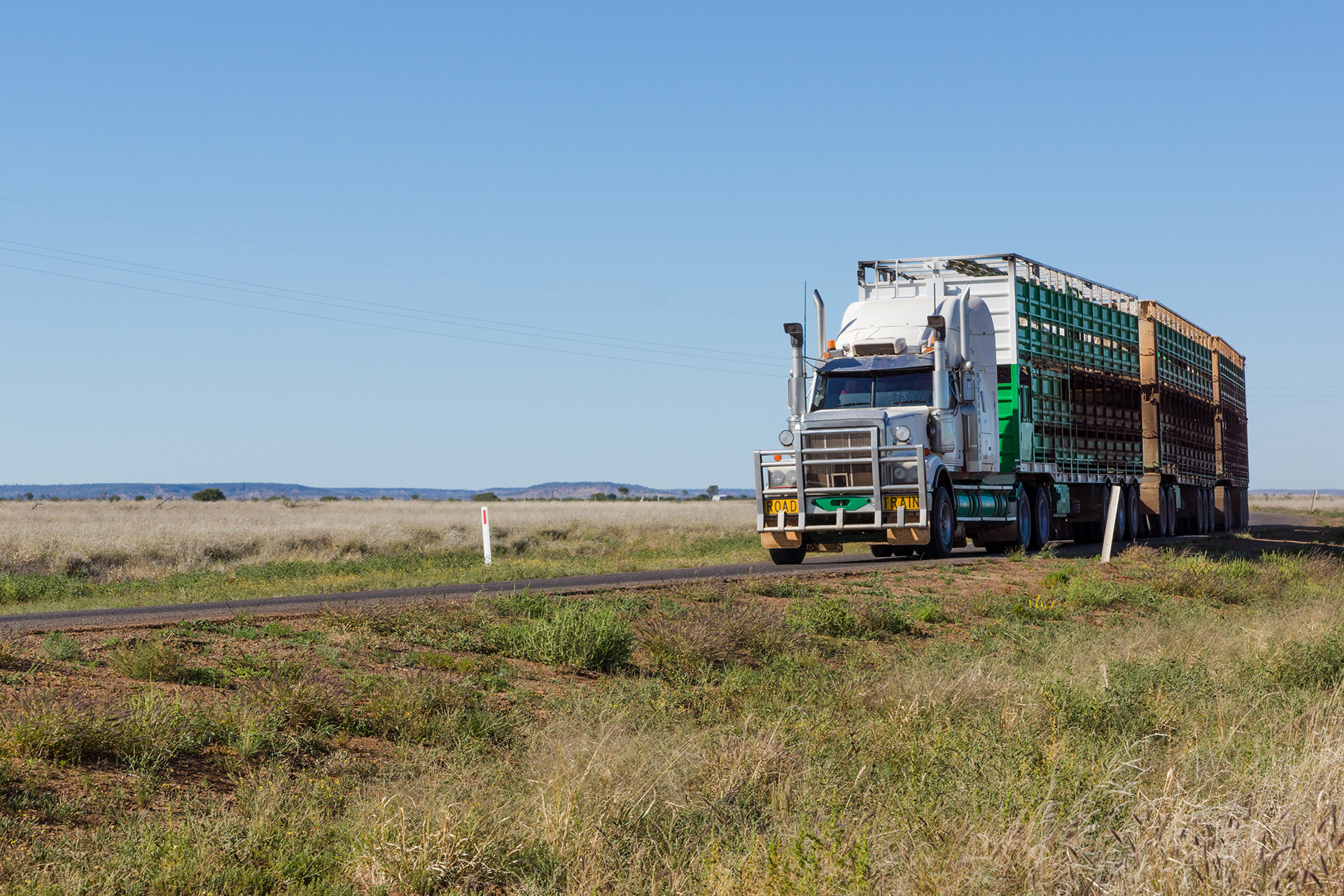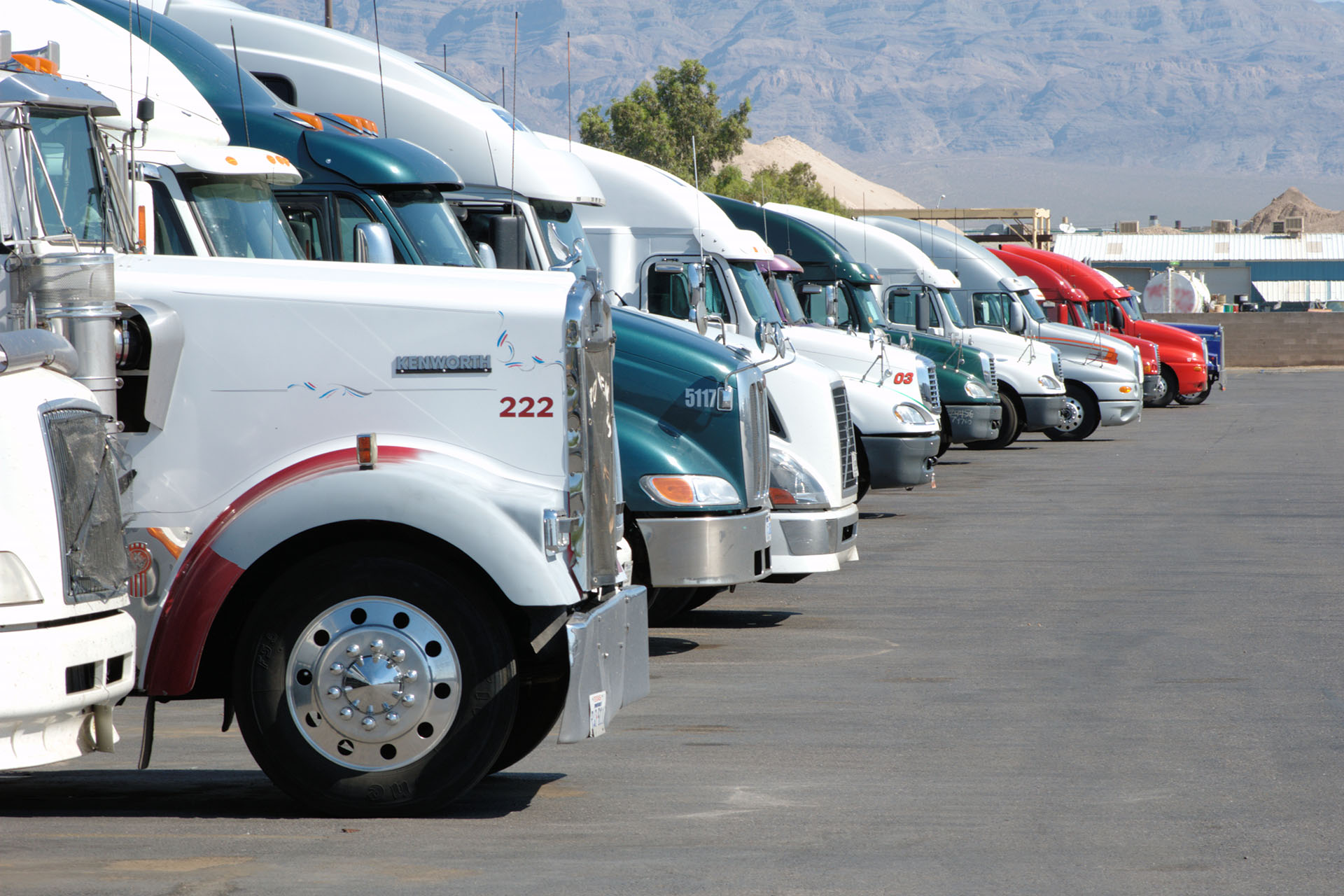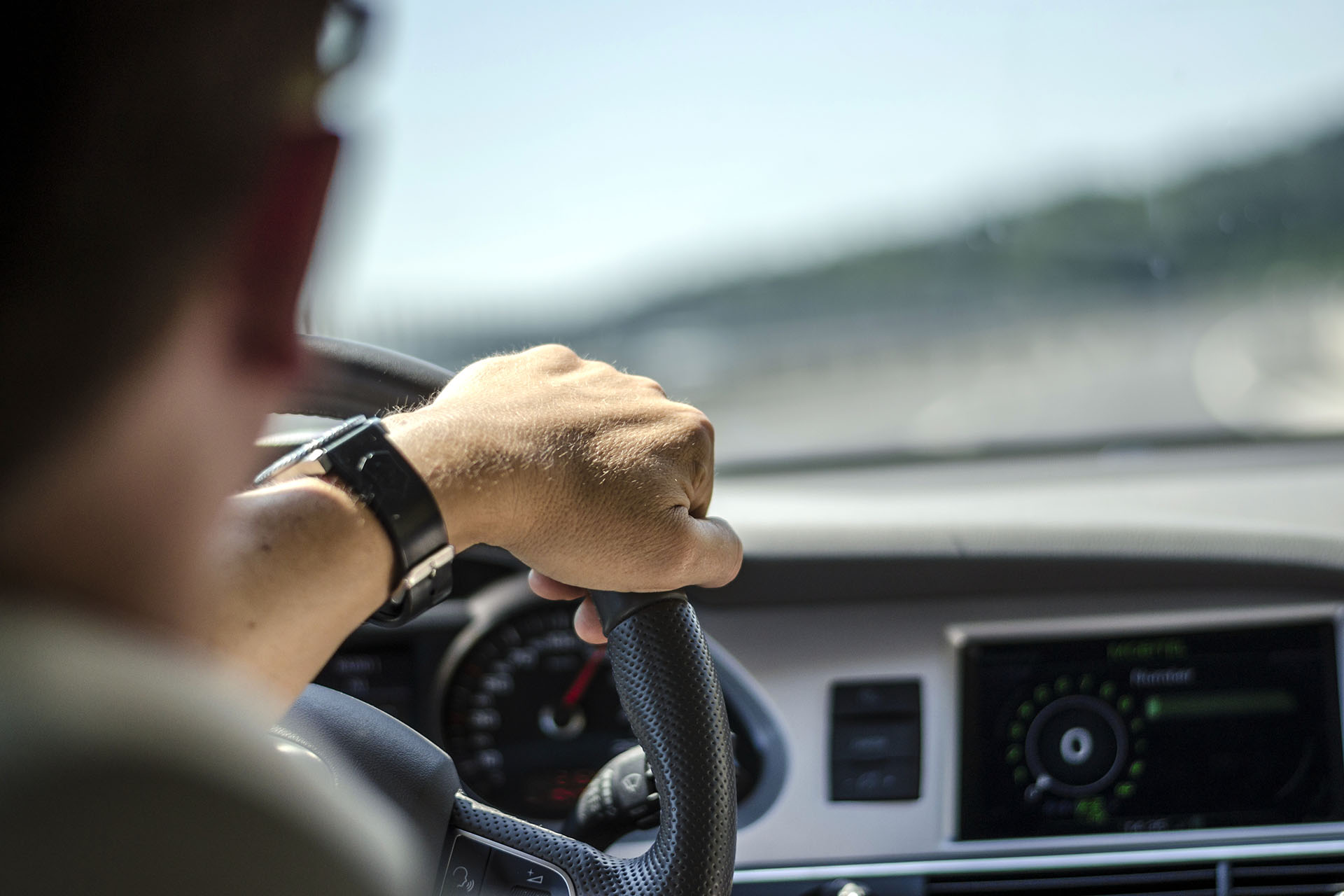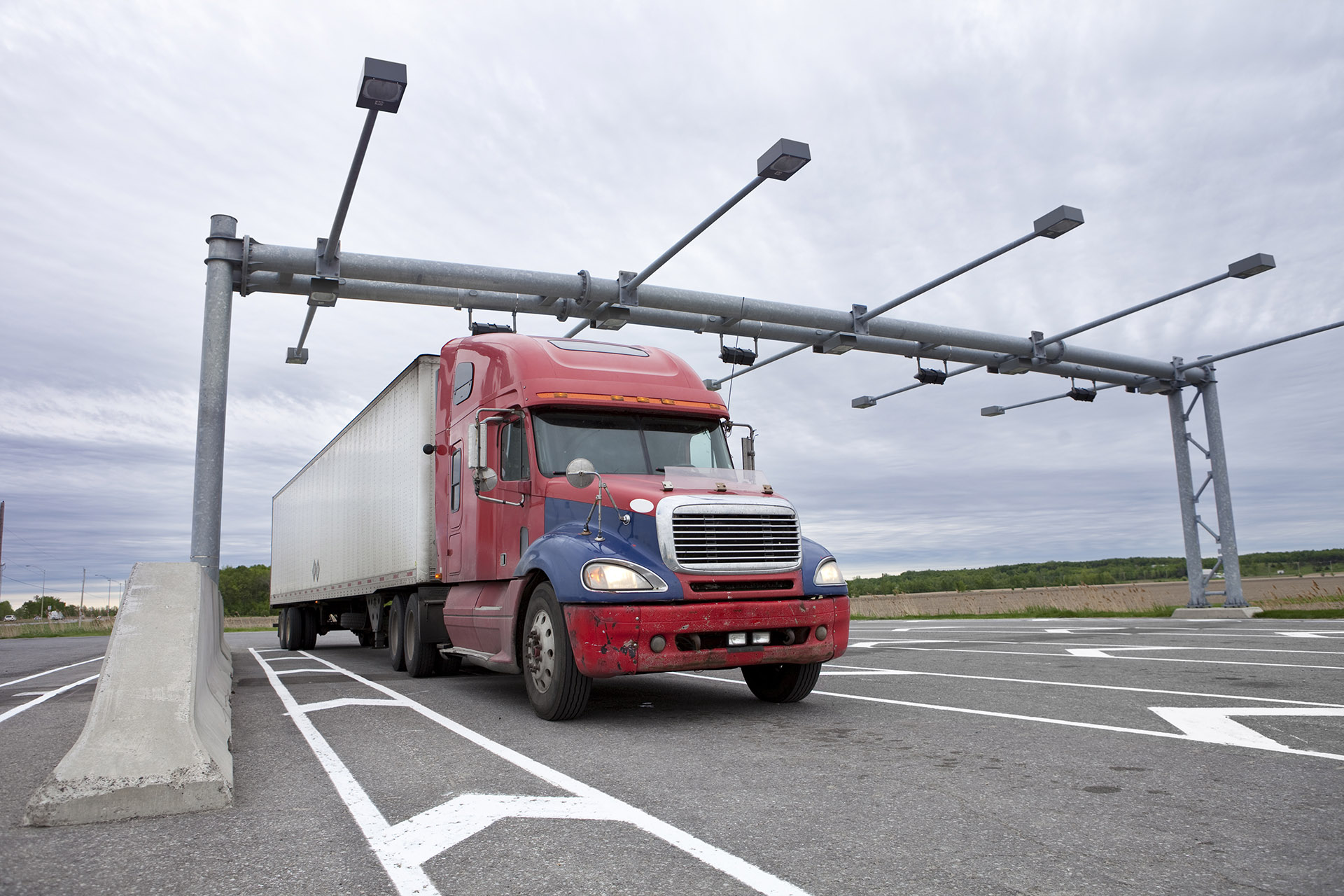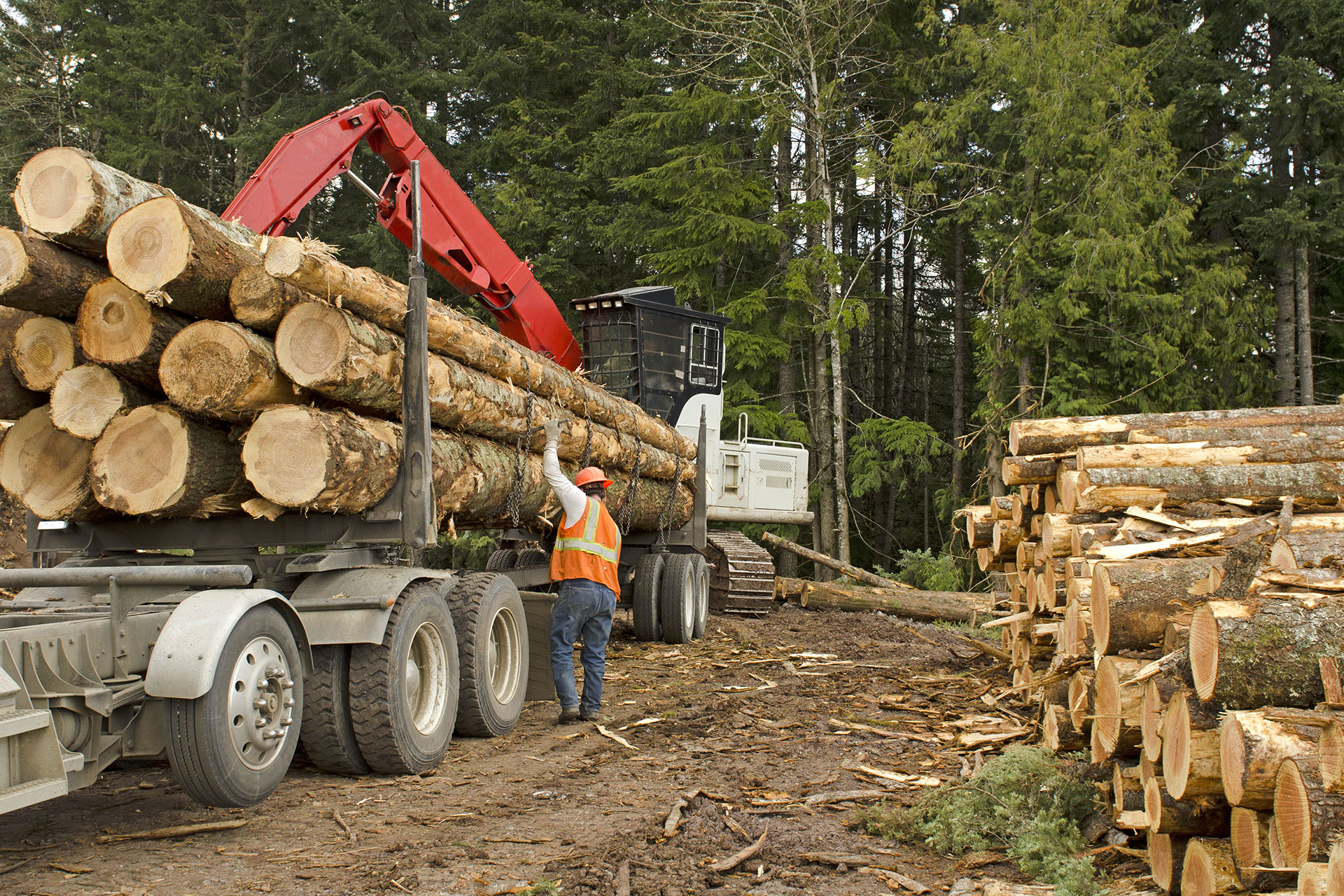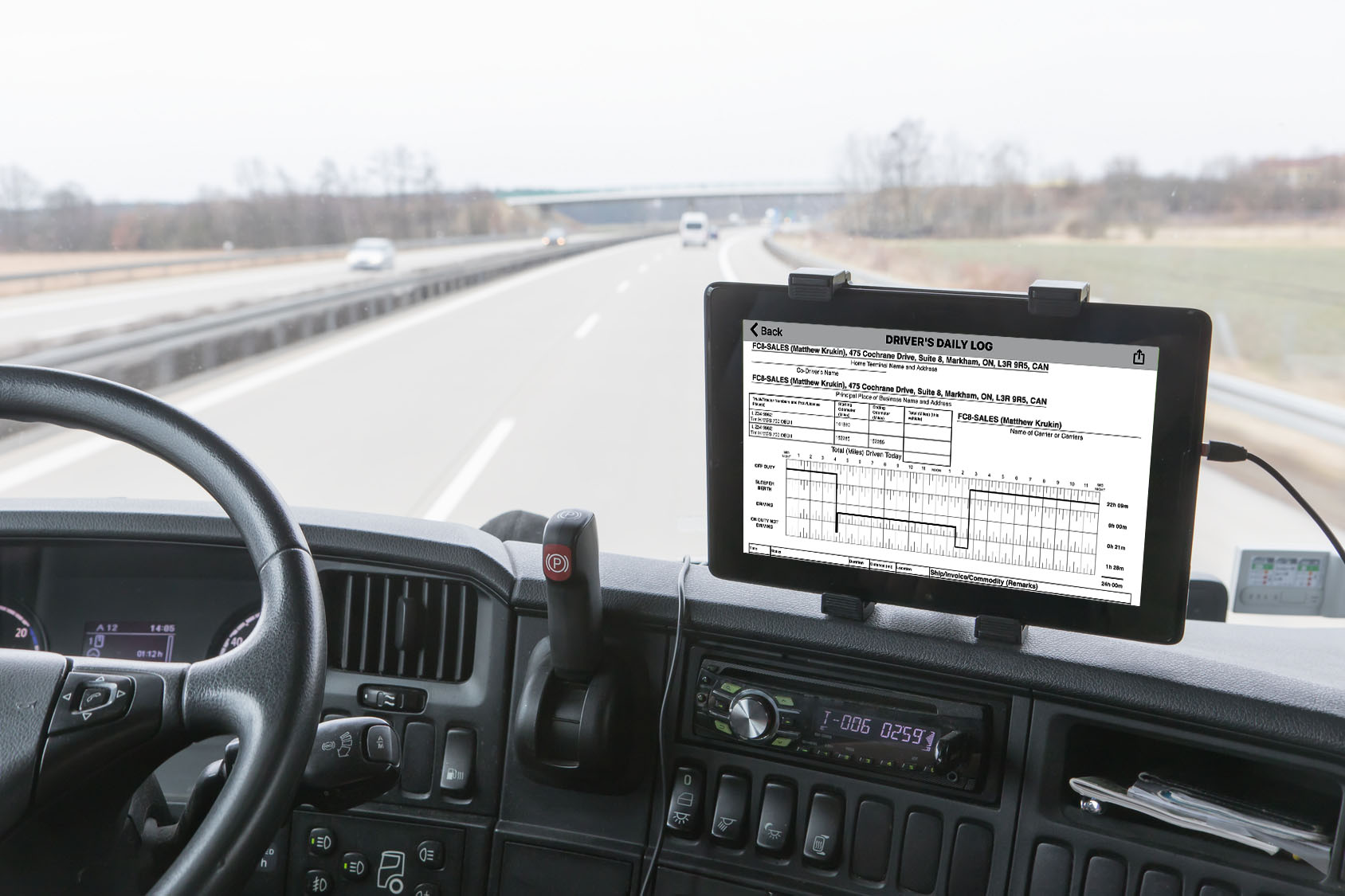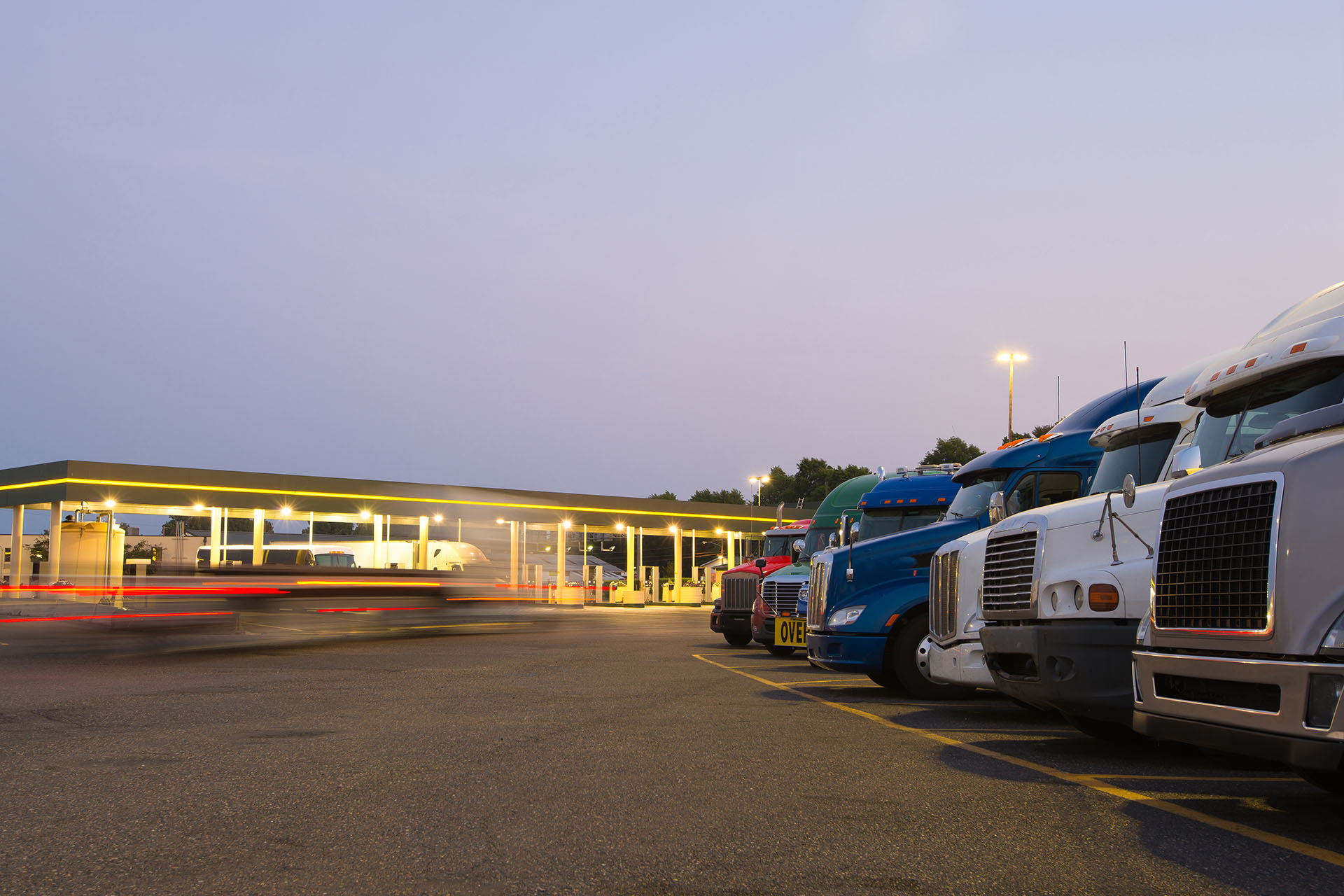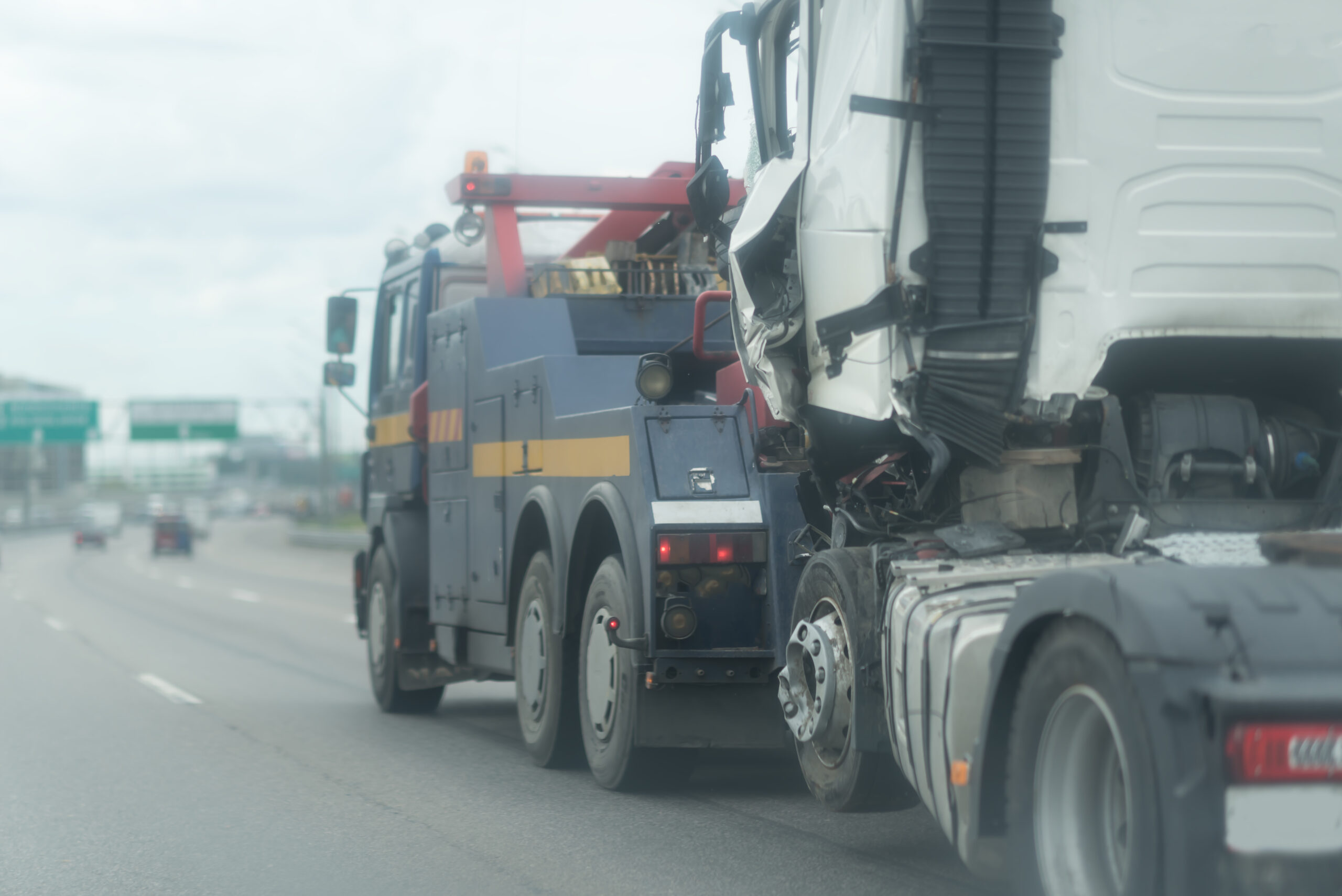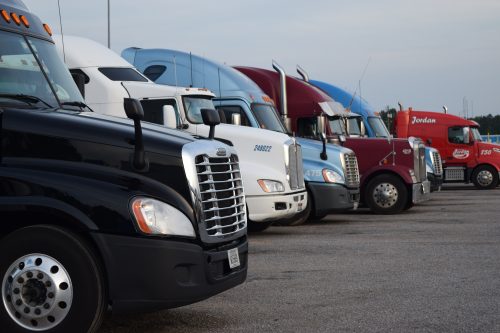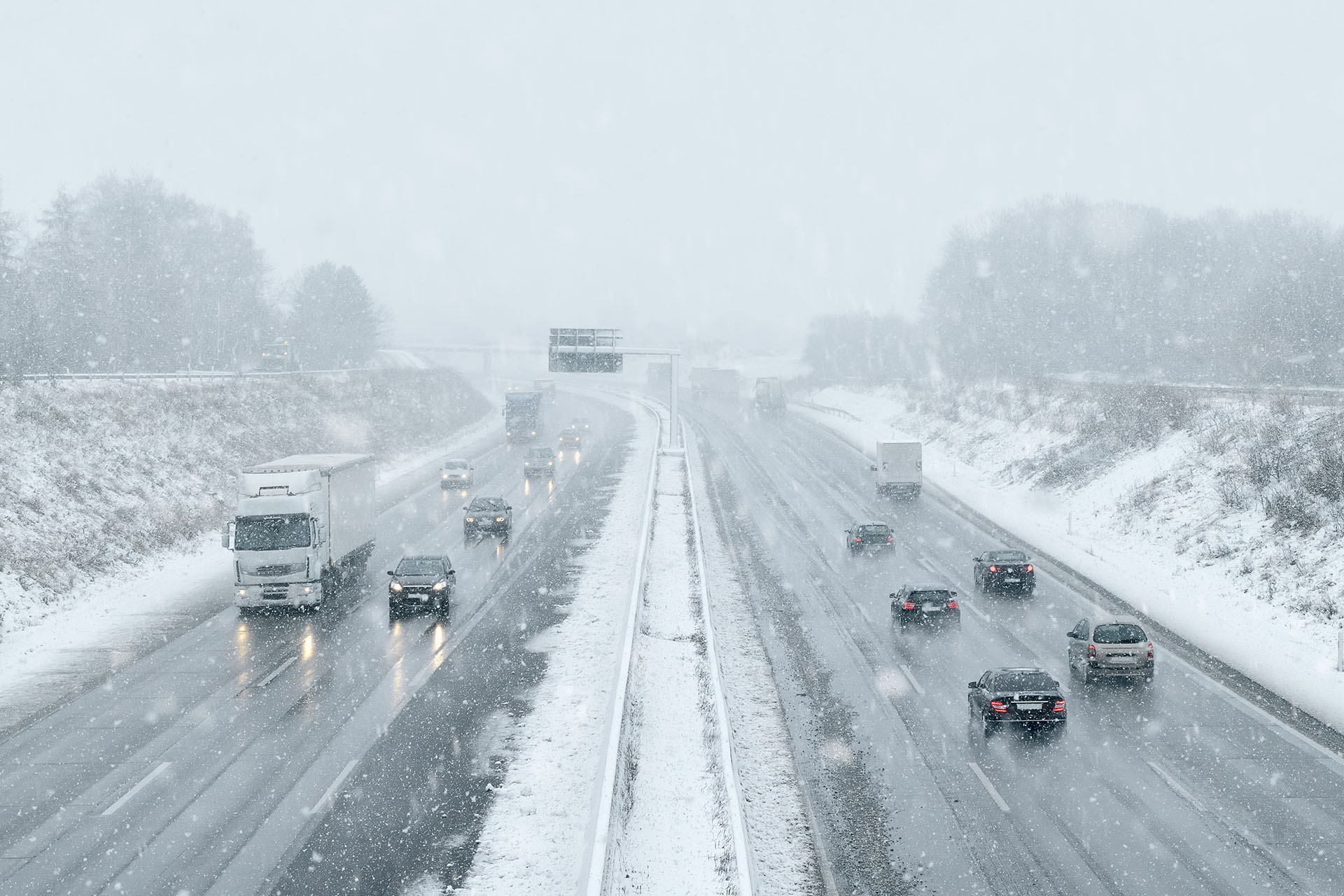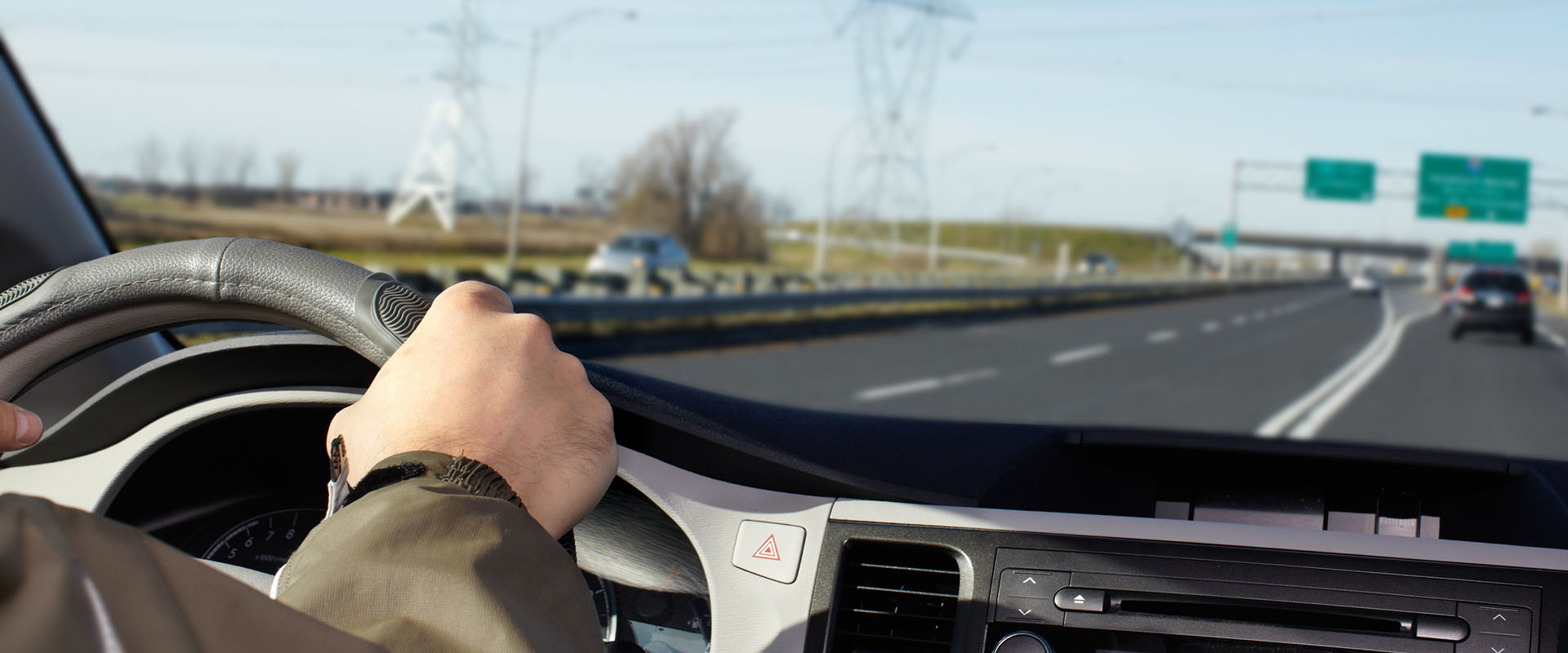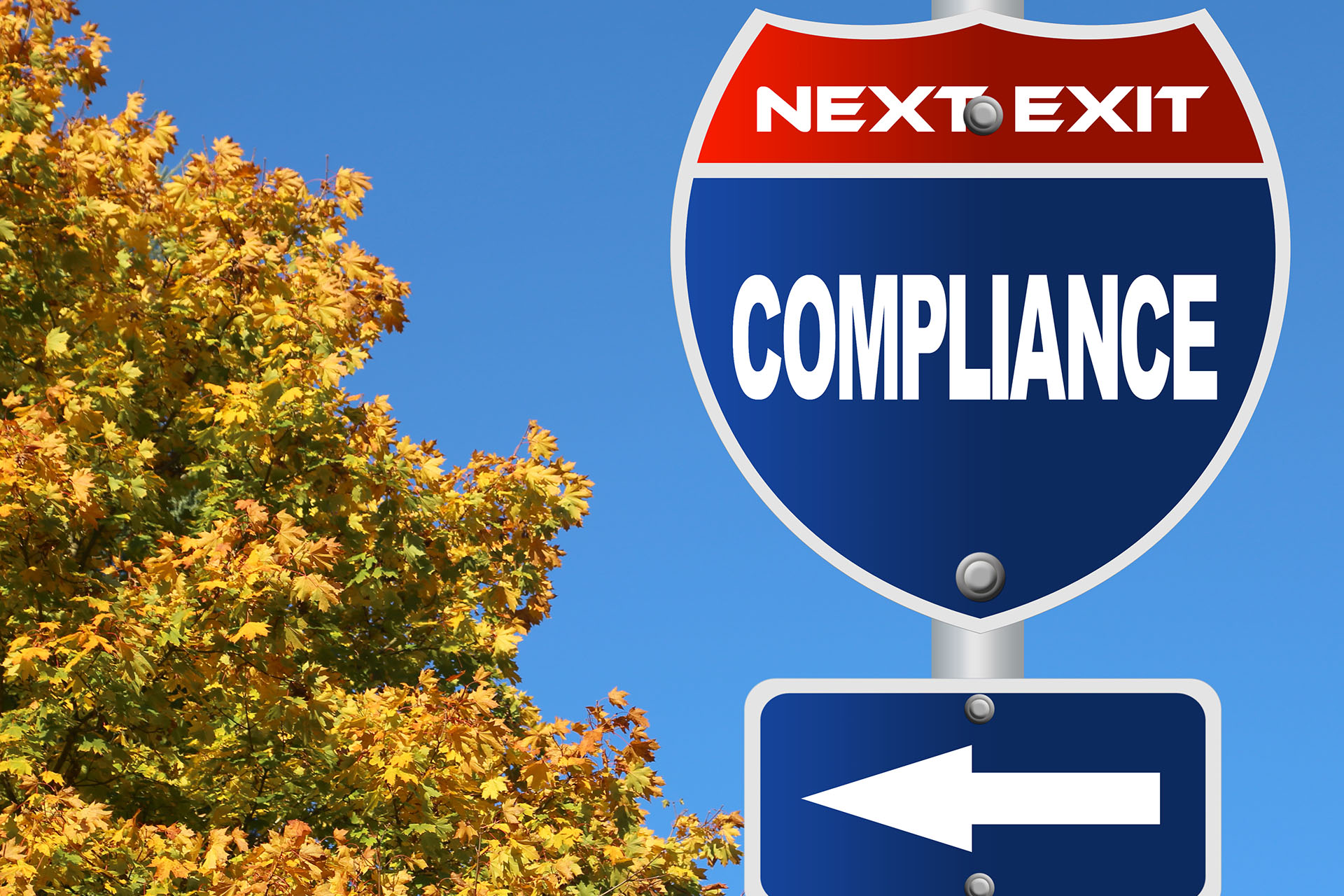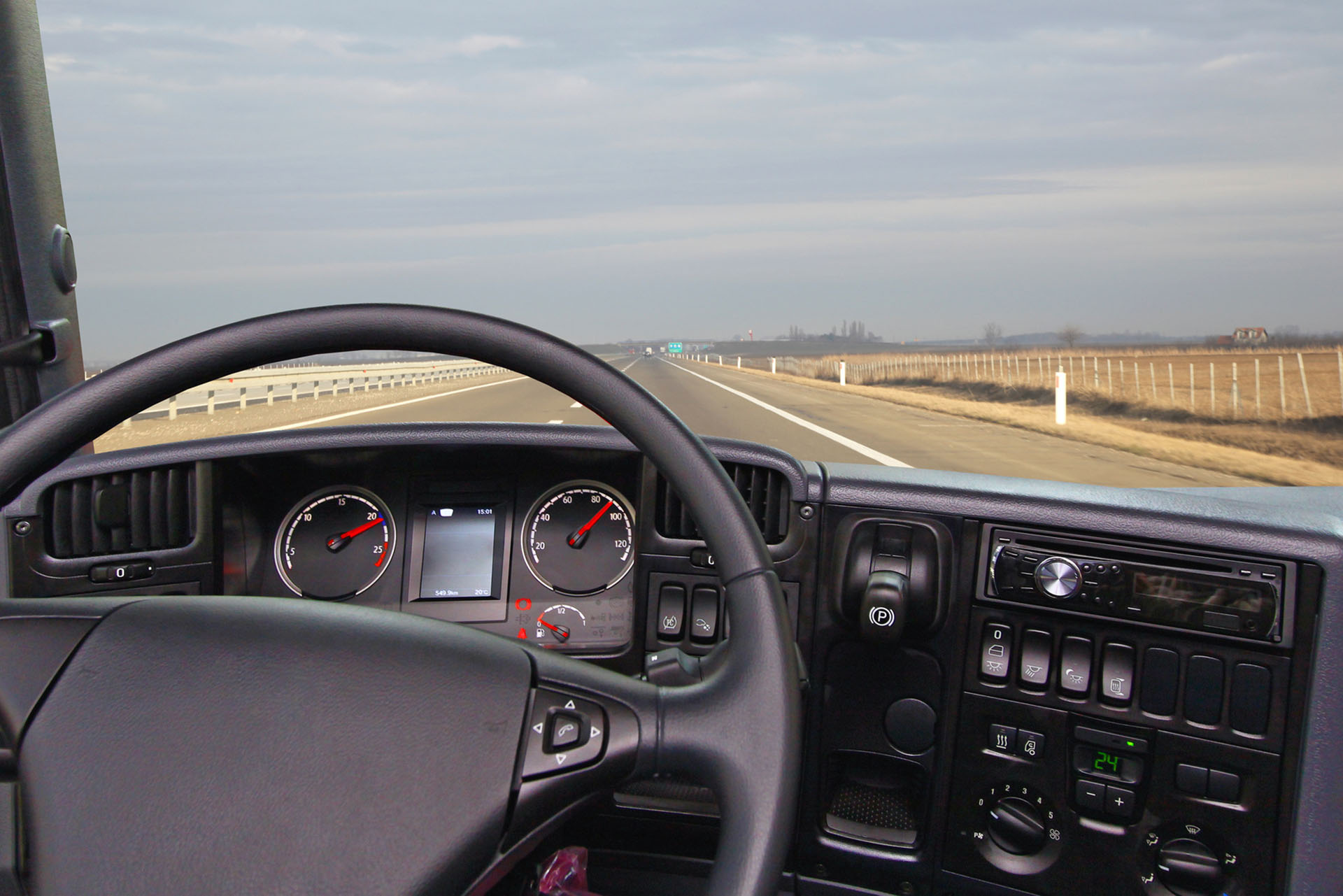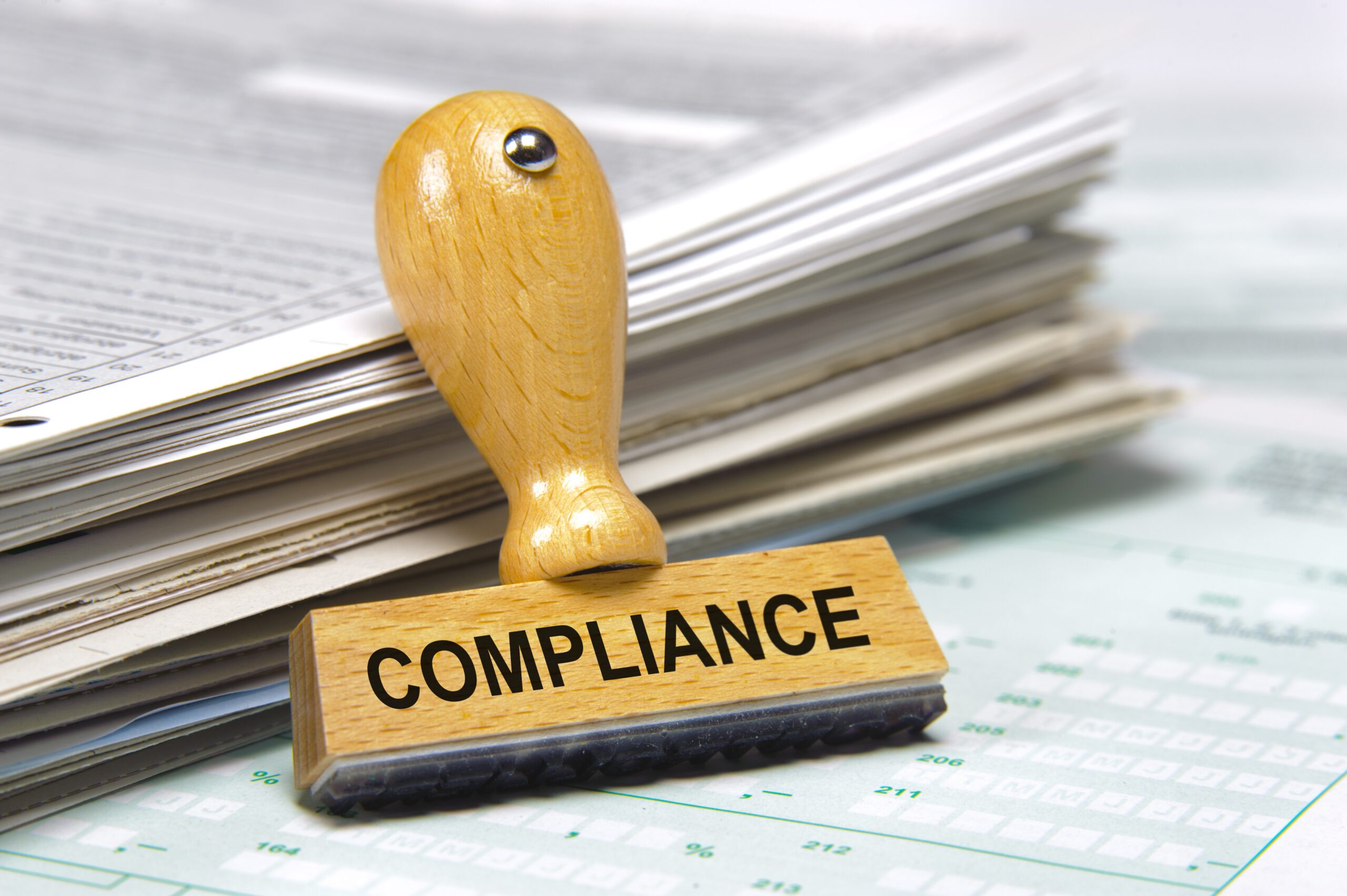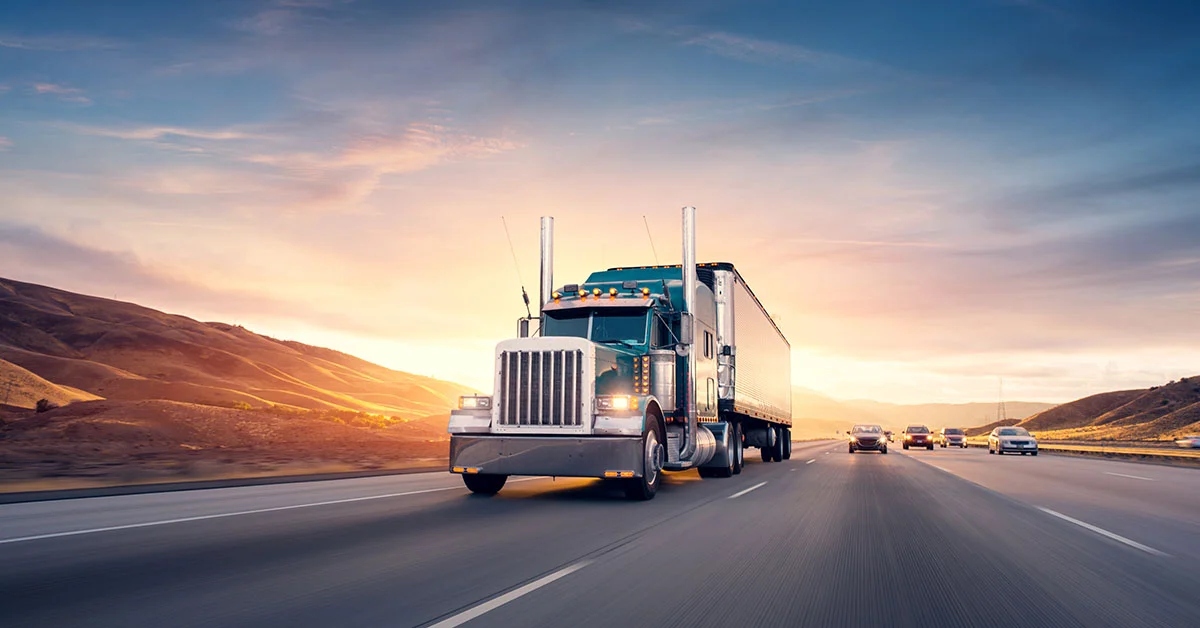- General Information about the ELD Rule
- ELD Exemptions
- Voluntary Usage and Compliance Phases
- Supporting Documents
- Adding Editing and Annotations to RODS
- Driver Harassment
- ELD Functions
- ELD Data Transfer
- ELD Malfunctions and Data Diagnostic Events
- ELD Accounts
- ELD Registration and Certification
- Differences between AOBRDs and ELDs
- Differences between AOBRDs and Logging Software Programs
- ELD Technical Specifications
- ELD Manufacturer Compliance
- Automatic On-Board Recording Device (AOBRD)
- U.S. Exceptions From the Hours-of-Service Regulations

A. General Information about the ELD Rule
1. What are the key requirements of the Electronic Logging Device (ELD) rule?
- Requires ELD use by commercial drivers who are required to prepare hours-of-service (HOS) records of duty status (RODS).
- Sets ELD performance and design standards, and requires ELDs to be certified and registered with FMCSA.
- Establishes what supporting documents drivers and carriers are required to keep.
- Prohibits harassment of drivers based on ELD data or connected technology.
- The rule also provides recourse for drivers who believe they have been harassed.
2. Who must comply with the electronic logging device (ELD) rule?
The ELD applies to most motor carriers and drivers who are currently required to maintain records of duty status (RODS) per Part 395, 49 CFR 395.8(a).
The rule applies to commercial buses as well as trucks, and to Canada- and Mexico-domiciled drivers.
The ELD rule allows limited exceptions to the ELD mandate, including:
- Drivers who operate under the short-haul exceptions may continue using timecards; they are not required to keep RODS and will not be required to use ELDs.
- Drivers who use paper RODS for not more than 8 days out of every 30-day period.
- Drivers who conduct drive-away-tow-away operations, in which the vehicle being driven is the commodity being delivered.
- Drivers of vehicles manufactured before 2000.
3. What electronic logging device (ELD) user documentation must be onboard a driver’s commercial motor vehicle?
Beginning on December 18, 2017, a driver using an ELD must have an ELD information packet onboard the commercial motor vehicle (CMV) containing the following items:
- A user’s manual for the driver describing how to operate the ELD;
- An instruction sheet describing the data transfer mechanisms supported by the ELD and step-by-step instructions to produce and transfer the driver’s hours-of-service records to an authorized safety official;
- An instruction sheet for the driver describing ELD malfunction reporting requirements and recordkeeping procedures during ELD malfunctions; and
- A supply of blank driver’s records of duty status (RODS) graph-grids sufficient to record the driver’s duty status and other related information for a minimum of 8 days.
Prior to December 18, 2017, it is recommended that motor carriers provide drivers with their user’s manual, malfunction instruction sheet, and graph-grids.
4. Can the ELD information packet be in electronic form?
Yes. The user’s manual, instruction sheet, and malfunction instruction sheet can be in electronic form. This is in accordance with the federal register titled “Regulatory Guidance Concerning Electronic Signatures and Documents”.
5. Can an electronic logging device (ELD) be on a smartphone or other wireless device?
Yes. An ELD can be on a smartphone, or other wireless device provided the device meets the ELD rule’s technical specifications.
6. Can a driver use a portable electronic logging device (ELD)?
Yes. A driver may use a portable ELD. A portable ELD must be mounted in a fixed position during commercial motor vehicle (CMV) operation and be visible to the driver from a normal seated driving position. This information can be found in the ELD Rule section 395.22(g).
7. How long must a motor carrier retain electronic logging device (ELD) record of duty status (RODS) data?
A motor carrier must retain ELD record of duty status (RODS) data and back-up data for 6 months.
The back-up copy of ELD records must be maintained on a device separate from that where original data are stored. Additionally, a motor carrier must retain a driver’s ELD records in a manner that will protect the driver’s privacy.
8. What electronically transferred data from electronic logging devices (ELDs) will be retained by Federal Motor Carrier Safety Administration (FMCSA) and other authorized safety officials?
FMCSA will not retain any ELD data unless there is a violation.
9. What is the carrier’s responsibility in ensuring that they are using a registered device?
Motor carriers are responsible for checking that their device is registered. This includes checking both the registration and revocation list periodically. The list of registered and revoked ELDs can be found on the FMCSA – Registed ELDs page of the FMCSA website.
In the event that an ELD is removed from the registration list, FMCSA advised all stakeholders that they would make efforts to notify the public and affected users. Motor carriers and drivers should sign-up for ELD updates to receive notifications on when an ELD has been listed on the Revocation List.
10. How will the ELD display screen or printout reflect special driving categories; yard moves and personal conveyance?
While not required, if the motor carrier configured the driver user account to authorize a special driving category, then the graph-grid will overlay periods using a different style line (such as dashed, dotted line, or shading) in accordance with section 4.8.1.3(c)(1) of the ELD Functional Specifications. The appropriate abbreviation must also be indicated on the graph-grid.
If the motor carrier does not configure the driver user account to authorize special driving categories, then the driver must annotate the beginning and end of the applicable special driving category in the remarks section of the RODS.
11. If the vehicle registration for a commercial motor vehicle reflects a model year of 2000 or newer, but the vehicle was manufactured without an engine control module (ECM), is the carrier required to comply with the ELD rule?
Yes, a motor carrier operating a vehicle with a manufactured model year of 2000 and newer and without an ECM is subject to the ELD rule.
If the currently installed engine does not support an ECM and is unable to obtain or estimate the required vehicle parameters, then the operator must use an ELD that does not rely on ECM connectivity, but meets the accuracy requirements of the final rule.
See Appendix A to Subpart B of Part 395 sections 4.2 and 4.3.1 of the ELD rule for accuracy requirements.
12. How are motor carriers required to present records of duty status (RODS) from December 11-17, 2017? Will drivers be required to present their records of duty status on electronic logging devices (ELDs)?
No, drivers will not be required to present RODS on ELDs from December 11, 2017, to December 17, 2017. Drivers can present their previous 7 days of RODS through any of the following:
- Paper records;
- A printout from an electronic logging device;
- A display from a device installed with logging software and electronic signature capabilities,
- Having the records available by entering them into an ELD; or
- Continued use of a grandfathered automatic on-board recording device.

B. ELD Exemptions
1. Who is exempt from the ELD rule?
Drivers who use the timecard exception are not required to keep records of duty status (RODS) or use ELDs.
Additionally, the following drivers are not required to use ELDs; however, they are still bound by the RODS requirements in 49 CFR 395 and must prepare logs on paper, using an Automatic On-Board Recording Device (AOBRD), or with a logging software program when required:
- Drivers who use paper RODS for not more than 8 days out of every 30-day period.
- Drivers of vehicles manufactured before 2000.
- Drivers who are required to keep RODS not more than 8 days within any 30-day period.
- Drivers who conduct drive-away-tow-away operations, where the vehicle being driven is the commodity being delivered, or the vehicle being transported is a motor home or a recreation vehicle trailer with one or more sets of wheels on the surface of the roadway.
- Drivers of vehicles manufactured before the model year 2000. (As reflected on the vehicle registration)
2. What time periods can be used to determine the 8 days in any 30-day period?
The 30-day period is not restricted to a single month, but applies to any 30-day period. For example, June 15 to July 15 is considered a 30-day period.
3. What information may be requested to support the exemption for drivers not required to use records of duty status (RODS) more than 8 days in any 30-day period?
Authorized safety officials may inspect and copy motor carrier records and request any records needed to perform their duties.
4. If the vehicle registration for a commercial motor vehicle reflects a model year of 2000 or newer, but the connections and motor vehicle components (such as the engine) are older than model year 2000, is the vehicle exempt from the ELD rule?
Yes. When a vehicle is registered, the model year should follow the criteria established by the National Highway Traffic Safety Administration (NHTSA).
There may be instances where the model year reflected on the vehicle registration is not the same as the engine model year, most commonly when a vehicle is rebuilt using a “glider kit.”
In this circumstance, an inspector or investigator should use the model year on the engine to determine if the driver is exempt from the ELD requirements.
If the engine model year is older than 2000, the driver is not subject to the ELD rule. In instances in which the engine model year is 2000 or newer, and the vehicle registration reflects a model year older than 2000, the driver is subject to the ELD rule.
While the driver is not required to possess documentation that confirms the vehicle engine model year, 49 CFR Part 379 Appendix A, requires motor carriers to maintain all documentation on motor and engine changes at the principle place of business.
If a determination cannot be made at the roadside, a DOT Inspector will likely refer the case for further investigation.
5. If a motor carrier’s operation is exempt from the requirements of 49 CFR Part 395.8, is the motor carrier also exempt from the ELD rule?
Yes. Motor carriers with operations that are exempt from the requirements of 395.8 are exempt from the ELD rule.
6. Are Canada and Mexico-domiciled drivers required to use electronic logging devices (ELDs) when they are operating in the United States?
Yes. Canada- and Mexico-domiciled drivers must comply with the Federal hours of service rules while operating in the United States.
This includes using ELDs complaint with 49 CFR Part 395, unless they qualify for one of the exceptions.
A driver operating in multiple jurisdictions will be able to annotate the driver’s record of duty status on the ELD with information on periods of operation outside the United States.
7. How should an ELD record a driver’s hours of service when operating in another country such as Canada?
The ELD provider may tailor the device to its customers’ needs/operations to assist them in accurately monitoring drivers’ hours of service compliance in accordance with the hours of service standards of the country operated in, such as cross-border operations.
8. Can drivers operate commercial motor vehicles (CMVs) equipped with electronic logging devices (ELDs), if they are not required to use them due to an exception?
Yes. Drivers can drive CMVs equipped with ELDs and still use their exception. A motor carrier may configure an ELD to show the exception for drivers exempt from using the ELD, or use the ELD annotation to record the status.
9. Are motor carriers that meet the agricultural exemption defined in 395.1(k) or the covered farm vehicle 395.1(s) subject to the ELD rule?
The ELD rule does not change any of the current hours of service exemptions. Therefore, motor carriers that meet the exemptions defined in 395.1 are not subject to Part 395, including the ELD rule while they are operating under the terms of the exemption.
The duty status of the driver may be noted as either off-duty (with appropriate annotation), or “exempt.” To go the following link below for additional information on the agriculture exemption.
10. Can a driver use an ELD on a commercial motor vehicle with a model year older than 2000?
Yes. However, the ELD must comply with the ELD rule’s technical specifications. The ELD may use alternative sources to obtain or estimate the required vehicle parameters, in accordance with the accuracy requirements in Section 4.3.1 of the ELD rule.

C. Voluntary Usage and Compliance Phases
1. How soon can electronic logging devices (ELDs) be installed and used in commercial motor vehicles (CMVs)?
Since February 16, 2016, ELD manufacturers have been able to register and self-certify their ELDs with FMCSA, and motor carriers have been able to elect to use ELDs listed on the website.
All motor carriers and drivers subject to the requirements in the ELD rule must begin using an ELD or “grandfathered AOBRD” on December 18, 2017, the compliance date of the ELD rule.
2. What are the enforcement procedures for registered electronic logging devices (ELDs) installed and used in commercial motor vehicles (CMVs) prior to the compliance date of the ELD rule?
Prior to the compliance date of December 18, 2017, ELD use is voluntary. DOT Inspectors will review ELD information to determine compliance with the hours of service regulations and to detect falsifications.
3. What are the options for carriers and drivers to complete records of duty status (RODS) prior to the Electronic Logging Device (ELD) rule compliance date?
Prior to December 18, 2017 drivers and motor carriers can use:
- Automatic onboard recording device (AOBRDs),
- ELDs,
- Paper logs or
- Devices with logging software programs.
4. What is a “grandfathered” automatic onboard recording device (AOBRD)?
A “grandfathered” AOBRD is a device that a motor carrier installed and required its drivers to use before the electronic logging device (ELD) rule compliance date of December 18, 2017.
The device must meet the requirements of 49 CFR 395.15. A motor carrier may continue to use grandfathered AOBRDs no later than December 16, 2019.
After that, the motor carrier and its drivers must use ELDs. See Section 395.15 (a) of the ELD final rule.
5. When are drivers subject to the ELD rule required to start using electronic logging devices (ELDs)?
Motor carriers and drivers subject to the ELD rule must start using ELDs by the compliance date of December 18, 2017, unless they are using a grandfathered Automatic On-board Recording Device (AOBRD).
6. What will be the enforcement procedures for “grandfathered” automatic onboard recording devices (AOBRDs) and electronic logging devices (ELD) during the two-year period following the compliance date of the ELD rule?
During the period when both “grandfathered” AOBRDs and ELDs will be used (December 18, 2017 to December 16, 2019), authorized safety officials will enforce ELD rule requirements for ELDs and the requirements in 49 CFR 395.15 for “grandfathered” AOBRDs.
The supporting document requirements for drivers and motor carriers using either device will take effect on the ELD rule compliance date of December 18, 2017.
7. According to § 395.8, if a motor carrier “installs and requires a driver to use an AOBRD before December 18, 2017 they may continue to use the AOBRD until December 16, 2019.” Does this mean I can move an AOBRD from one vehicle to another after December 18, 2017?
If a motor carrier’s operation uses AOBRDs before December 18, 2017, and they replace vehicles in their fleet they can install an AOBRD that was used in the previous CMV. However, they may not purchase and install a new AOBRD in a vehicle after December 18, 2017.

D. Supporting Documents
1. When are motor carriers and drivers required to comply with the supporting document requirements?
All motor carriers and drivers must comply with the supporting documents requirements starting December 18, 2017.
2. How many supporting documents motor carriers must retain, and when must drivers submit them to the motor carrier?
Motor carriers must retain up to 8 supporting documents for every 24-hour period that a driver is on duty.
Drivers must submit their records of duty status (RODS) and supporting documents to the motor carrier no later than 13 days after receiving them.
If a motor carrier retains more than 8 supporting documents, the motor carrier must maintain the first and last document generated during the regular course of business.
3. How long must motor carriers retain records of duty status (RODS) and supporting documents?
Motor carriers must retain RODS and supporting documents for 6 months.
4. What are the categories of supporting documents?
Supporting documents required in the normal course of business are important to verify a driver’s records of duty status (RODS). They consist of 5 categories, described in 49 CFR 395.11(c):
- Bills of lading, itineraries, schedules, or equivalent documents that indicate the origin and destination of each trip;
- Dispatch records, trip records, or equivalent documents;
- Expense receipts related to any on-duty not-driving time;
- Electronic mobile communication records, reflecting communications transmitted through a fleet management system; and
- Payroll records, settlement sheets, or equivalent documents that indicate what and how a driver was paid.
If a driver keeps paper RODS under 49 CFR 395.8(a)(1)(iii), the carrier must also retain toll receipts. For drivers using paper RODS, toll receipts do not count toward the 8-document cap.
5. Are there specific categories of supporting documents that drivers can provide electronically?
There are 2 categories—electronic mobile communications and payroll records—are not documents a driver would have to physically retain.
They may be part of a larger record that the carrier retains electronically or physically at the dispatch location or principal place of business.
In applying the 8-document limit, all information in an electronic mobile communication record will be counted as 1 document per duty day.
6. Can supporting documents be limited to only those acquired at the beginning and end of the workday?
No. Documents acquired throughout the day are important in enforcing the 60/70-hour rule, which is a crucial part of ensuring hours of service compliance.
Compliance with the 60/70-hour rule is based on the cumulative hours an individual works over a period of days.
Supporting documents are critical to verify the proper duty statuses in assessing compliance with the 60/70 hour rules.
7. What information should be in the supporting documents?
Supporting documents must contain the following elements:
- Driver name or carrier-assigned identification number, either on the document or on another document enabling the carrier to link the document to the driver.
- The vehicle unit number can also be used if it can be linked to the driver;
- Date;
- Location (including name of nearest city, town, or village); and
- Time.
8. Can a document with fewer than 4 required elements be used as a supporting document?
If a driver has fewer than 8 documents that include all 4 elements, a document that contains all of the elements except “time” is considered a supporting document.
9. What supporting documents should a motor carrier retain if a driver submits more than 8 documents for a 24-hour period?
If a driver submits more than 8 documents, the motor carrier must retain the first and last documents for that day and 6 other supporting documents. If a driver submits fewer than 8 documents, the motor carrier must keep each document.
10. Are drivers required to show supporting documents during roadside inspections?
Upon request, a driver must provide any supporting document in the driver’s possession for an authorized safety official’s review.

E. Adding Editing and Annotations to RODS
1. What is the difference between “paper records of duty status (RODS)” and printouts of RODS from electronic logging devices (ELDs)?
“Paper RODS” means RODS that are not kept on an ELD or automatic onboard recording device (AOBRD), but that are either recorded manually (in accordance with 49 CFR 395.8(f)) or on a computer not synchronized with the vehicle, or that is otherwise not qualified to be an ELD or AOBRD.
Printouts of RODS from ELDs are the reports that ELDs must be able to generate upon request from an authorized safety official, per section 4.8.1 of the ELD rule.
2. What is the difference between an “edit” and an “Annotation”?
An edit is a change to an electronic logging device (ELD) record that does not overwrite the original record.
An annotation is a note related to a record, update, or edit that a driver or authorized support personnel may input to the ELD. Section 49 CFR 395.30(c)(2) requires that all edits, whether made by a driver or the motor carrier, be annotated to document the reason for the change.
For example, an edit showing time being switched from “off duty” to “on-duty not driving” could be annotated by the carrier to note, “Driver logged training time incorrectly as off duty.”
This edit and annotation would then be sent to the driver for approval.
3. Can a driver annotate the electronic logging device (ELD) record?
Yes. A driver can use annotations to indicate the beginning and end of a period of authorized personal commercial vehicle use, or yard moves, as well as other special driving categories, such as adverse driving conditions (49 CFR 395.1(b)) or oilfield operations (49 CFR 395.1(d)).
4. Who can edit an electronic logging device (ELD) record?
Both the driver and authorized carrier staff can make limited edits to an ELD record to correct mistakes or add missing information.
All edits must include a note (annotation) to explain the reason for the edit. In addition, the driver must certify that any carrier edit is accurate, and resubmit the records.
If the driver chooses not to re-certify RODs, this is also reflected in the ELD record.
The ELD must keep the original, unedited record, along with the edits.
Example: a carrier edits a record to switch a period of time from “off-duty” to “on-duty not driving”, with a note that explains, “Driver logged training time incorrectly as off-duty”.
The edit and annotation are sent to the driver to verify. The edit is not accepted until the driver confirms it and resubmits the RODS.
5. Who is responsible for the integrity of records of duty status in regards to the editing and certification rights of drivers and motor carriers?
Although the ELD reflects the driver’s RODS, the driver and carrier share responsibility for the integrity of the records.
The driver certification is intended, in part, to protect drivers from unilateral changes. However, if the driver is unavailable or unwilling to recertify the record, the carrier has proposed edit and annotation would remain part of the record.
6. Are the original electronic logging device (ELD) records retained after edits are made, and accessible to drivers?
Yes. The original ELD records are retained even when allowed edits and annotations are made.
If the driver cannot independently access the records from the ELD, the motor carrier must provide access on request. However, the right to access is limited to a 6-month period, consistent with the period during which a motor carrier must retain drivers’ records of duty status (RODS).
7. Can a user edit or change driving time that has been recorded by an electronic logging device (ELD) to non-driving time?
No. An ELD automatically records all of the time that a CMV is in motion as driving time that cannot be edited or changed to non-driving time.
8. How can a driver record their on-duty not driving status, such as working in a warehouse, on an ELD, prior to operating a commercial motor vehicle equipped with an ELD?
All of the driver’s hours of service must be accounted for when subject to the HOS rules. Prior to operating a commercial motor vehicle equipped with an ELD, the driver can manually add any on-duty not driving time accrued prior to driving a CMV.
9. Are drivers allowed to edit their records of duty status (RODS) using the electronic logging device (ELD) back office support systems once they leave the commercial motor vehicle (CMV)?
Yes. Drivers may edit their RODS using ELD back office support systems. While these edits or corrections are allowed to ensure an accurate record of the driver’s duty status, the electronic record must retain what was originally recorded, as well as the date, time, and identity of the individual entering the corrections or edits.
10. What procedure should be followed if multiple, compatible electronic logging devices (ELDs) are used to record a driver’s record of duty status (RODS) within a motor carrier’s operation?
If multiple, compatible ELDs are used to record a driver’s RODS within a motor carrier’s operation, the ELD in the vehicle the driver is operating must be able to produce a complete ELD report for that driver, on demand, for the current 24-hour period and the previous 7 consecutive days.
11. What procedure should be followed if multiple, incompatible electronic logging devices (ELDs) are used to record a driver’s record of duty status (RODS)?
The motor carrier and the driver are responsible for ensuring that all of the RODS information required by the HOS rules is available for review by authorized safety officials at the roadside.
If the driver uses multiple ELDs that are not compatible (e.g., the data file from one system cannot be uploaded into the other system), the driver must either manually enter the missing duty status information or provide a printout from the other system(s) so that an accurate accounting of the duty status for the current and previous 7 days is available for the authorized safety official.
12. What procedure should be followed if an electronic logging device (ELD) is replaced or reset?
For a reset or replaced ELD, the ELD rule requires data or documents showing the driver’s records of duty status (RODS) history in the vehicle.
This data would include the driver’s past seven days of RODS, loaded either into the “new” ELD or in paper format to be provided at roadside.
13. When a motor carrier discovers a driver in a team driving operation failed to log in and his or her activities were assigned to the co-driver, can the motor carrier reassign the generated data?
For team drivers, the driver account associated with the driving time records may be edited and reassigned between the team drivers, if there was a mistake resulting in a mismatch between the actual driver and the driver recorded by the ELD, and if both team drivers were indicated in one another’s records as a co-driver.
Each co-driver must confirm the change for the corrective action to take effect.
14. What must a driver do with unassigned driving time when he or she logs into the electronic logging device (ELD)?
A driver must review any unassigned driving time when he or she logs into the ELD.
If the unassigned records do not belong to the driver, the driver must indicate that in the ELD record.
If driving time logged under this unassigned account belongs to the driver, the driver must add that driving time to his or her own record.
15. What must a motor carrier do with unassigned driving records from an electronic logging device (ELD)?
A motor carrier must either explain why the time is unassigned or assign the time to the appropriate driver.
The motor carrier must retain unidentified driving records for at least 6 months as a part of its hours of service (HOS) ELD records, and make them available to authorized safety officials.
16. If a driver is permitted to use a Commercial Motor Vehicle (CMV) for personal reasons, how must the driving time be recorded?
The driver must identify the driving time as personal conveyance on the device.

F. Driver Harassment
1. What is the definition of harassment in the Electronic Logging Device (ELD) rule?
Harassment is defined as an action by a motor carrier toward one of its drivers that the motor carrier knew, or should have known, would result in the driver violating hours of service (HOS) rules in 49 CFR 395 or 49 CFR 392.3.
These rules prohibit carriers from requiring drivers to drive when their ability or alertness is impaired due to fatigue, illness or other causes that compromise safety.
To be considered harassment, the action must involve information available to the motor carrier through an ELD or other technology used in combination with an ELD.
Motor carriers harassment of a driver is strictly prohibited.
2. How does the Electronic Logging Device (ELD) rule address harassment of drivers using ELDs?
The ELD rule has provisions to prevent the use of ELDs to harass drivers. A driver may file a written complaint under 49 CFR 386.12(b) if the driver was subject to harassment.
Technical provisions that address harassment include a mute function to ensure that a driver is not interrupted in the sleeper berth. Furthermore, the design of the ELD allows only limited edits of an ELD record by both the driver and the motor carrier’s agents, and in either case, the original ELD record cannot be changed.
As a result, motor carriers will be limited in forcing drivers to violate the hours of service (HOS) rules without leaving an electronic trail that would point to the original and revised records.
The driver certification is also intended, in part, to protect drivers from unilateral changes, which has been identified as a factor contributing to driver harassment.
Harassment will be considered in cases of alleged hours of service (HOS) violations; therefore, the penalty for harassment is in addition to the underlying violation under 49 CFR 392.3 or part 395.
An underlying HOS violation must be found for a harassment penalty to be assessed.
3. Does the Electronic Logging Device (ELD) rule require real-time tracking of commercial motor vehicle (CMVs) with ELDs?
No. Real-time tracking of CMVs is not required in the ELD rule. However, a motor carrier may use technology to track its CMVs in real time for business purposes.
A motor carrier is free to use this data as long as it does not engage in harassment or violate the Federal Motor Carrier Safety Regulations.
4. What are the differences between harassment and coercion?
A motor carrier can only be found to have committed harassment if the driver commits a specified underlying hours of service (HOS) violation based on the carrier’s actions and there is a connection to the electronic logging device (ELD).
Adverse action against the driver is not required, because the driver complied with the carrier’s instructions.
In contrast, coercion is much broader in terms of entities covered. This term addresses the threat to withhold work from or take adverse employment action against a driver in order to induce the driver to violate a broader range of regulatory provisions, or to take adverse action to punish a driver for the driver’s refusal to operate a commercial motor vehicle (CMV) in violation of the specified regulations.
Unlike harassment, coercion does not have to result in the driver being in violation of the regulations and does not have to involve the use of an ELD.
5. What should a driver consider before filing a harassment complaint?
Any driver who feels that he or she was the subject of harassment to also consider FMCSA’s coercion rule and the Department of Labor’s whistleblower law (enacted as part of the Surface Transportation Assistance Act (49 U.S.C. 31105)), which provides retaliation protection.
6. How much time is allowed for a driver to file a harassment complaint?
A driver must file a written harassment complaint no later than 90 days after the event.
7. Where should a driver file a harassment complaint?
The driver’s must file a written complaint with the National Consumer Complaint Database at http://nccdb.fmcsa.dot.gov or with the FMCSA Division Administrator for the State where the driver is employed (http://www.fmcsa.dot.gov/mission/field-offices).
8. What information must be submitted in a harassment complaint?
The following information must be submitted in writing:
- Driver’s name, address, and telephone number;
- Name and address of the motor carrier allegedly harassing the driver; and
- Statement of the facts to prove each allegation of harassment, including:
- How the electronic logging device (ELD) or other technology used with the ELD contributed to harassment.
- The date of the alleged action.
- How the motor carrier’s action violated either 49 CFR 392.3 or 49 CFR 395.
- Driver’s signature.
Any supporting evidence that will assist FMCSA in the investigation of the complaint should also be included along with the complaint.

G. ELD Functions
1. What information is automatically recorded by an electronic logging device (ELD)?
An ELD automatically records the following data elements at certain intervals: date; time; location information; engine hours; vehicle miles; and identification information for the driver, authenticated user, vehicle, and motor carrier.
2. When is location data recorded by an electronic logging device (ELD)?
Location data must be recorded by an ELD at 60-minute intervals when the vehicle is in motion, and when the driver powers up and shuts down the engine, changes duty status, and indicates personal use or yard moves.
3. Will the vehicle location information identify street addresses?
No. Vehicle location information is not sufficiently precise to identify street addresses.
For each change in duty status, the ELD must convert automatically captured vehicle position in latitude/longitude coordinates into geo-location information that indicates the approximate distance and direction to an identifiable location corresponding to the name of a nearby city, town, or village, with a State abbreviation.
4. Is an electronic logging device (ELD) required to collect data about vehicle performance?
No. ELDs are not required to collect data on vehicle speed, braking action, steering function or other vehicle performance parameters.
ELDs are only required to collect data to determine compliance with hours of service (HOS) regulations.
5. Do the specifications in the ELD rule for electronic logging devices (ELDs) include requirements to automatically control the vehicle, such as other safety systems that may automatically reduce acceleration or apply braking?
No. The specifications for ELDs do not include requirements to control the vehicle.
An ELD is a recording device that records vehicle parameters through its synchronization to the vehicle’s engine, and allows for entries related to a driver’s record of duty status (RODS).
6. What is the level of accuracy for commercial motor vehicle (CMV) location information recorded by an electronic logging device (ELD)?
During on-duty driving periods, the location accuracy is approximately within a 1-mile radius. When a driver operates a CMV for personal use, the position reporting accuracy would be approximately within a 10-mile radius.
7. What does engine synchronization mean for the purposes of electronic logging device (ELD) compliance?
An ELD must be integrally synchronized with the engine of the commercial motor vehicle (CMV).
Engine synchronization means monitoring engine operation to automatically capture the engine power status, vehicle motion status, miles driven, and engine hours.
8. Will GPS-derived data for mileage be allowed as a substitute for data that cannot be readily obtained from a vehicle electronic control module (ECM)?
No, the ELD must be able to monitor engine operation to automatically capture required data.
A GPS is not integrally synchronized with a vehicle’s engine, and cannot be a substitute for required ECM data to comply with the ELD rule.
9. Can an electronic logging device (ELD) have a feature to warn drivers about approaching hours of service (HOS) limits?
Yes. FMCSA allows, but does not require, warning or notification to drivers when they are nearing their HOS limits.
10. When will an electronic logging device (ELD) automatically start to record a driving mode or status?
An ELD must automatically switch to driving mode once the commercial motor vehicle (CMV) is moving up to a set speed threshold of five miles per hour.
The in-motion state must not be configured greater than 5 miles per hour. The vehicle will be considered stopped once its speed falls to 0 miles per hour and stays at 0 miles per hour for 3 consecutive seconds.
11. When will an electronic logging device (ELD) automatically change the duty status from driving to the default duty status of on-duty not driving?
When the duty status is set to driving, and the commercial motor vehicle (CMV) has not been in motion for 5 consecutive minutes, the ELD must prompt the driver to confirm a continued driving status or enter the proper duty status.
If the driver does not respond to the ELD prompt within 1 minute, the ELD must automatically switch the duty status to on-duty not driving.
12. How must a driver be able to access records of duty status (RODS) from an electronic logging device (ELD)?
Since all ELD data file output will be a standard comma-delimited file, a driver may import the data output file into Microsoft Excel, Word, notepad, or other common tools.
A driver will also be able to access ELD records through a screen display or a printout, depending on the ELD design.
13. How does the electronic logging device reflect personal conveyance when the personal conveyance status is selected and the commercial motor vehicle (CMV) is driven?
When the personal conveyance status is selected (as allowed and configured by the motor carrier), the CMV’s location is recorded with a lower level of precision (i.e., an approximate 10-mile radius). Personal conveyance will be reflected on the ELD using a different style line (such as dashed or dotted line).
14. What are the display requirements for team drivers using the same electronic logging device (ELD) on their commercial motor vehicle (CMV)?
In the event of team drivers, the ELD must display the data for both co-drivers who are logged into the system.
15. Can a logged-in co-driver make entries over his or her records using the electronic logging device (ELD) when he or she is not driving?
Yes. The driver who is not operating the vehicle may make entries over his or her own records when the vehicle is in motion. However, co-drivers cannot switch driving roles on the ELD when the vehicle is in motion.
16. Can an electronic logging device (ELD) record be set to record minimum duty status durations, such as 15 minutes?
No. The ELD will capture all entered duty statuses, and there is no minimum amount of time that these statuses must or should be engaged.
While longstanding industry and enforcement practices may have relied upon minimum intervals of 15 minutes in handwritten records of duty status (RODS), an ELD provides a more accurate accounting of drivers’ time.
This should not be construed to indicate that the activities electronically recorded as less than 15 minutes are suspect, only that the time actually required to complete the task may be less that what had been traditionally noted in the paper RODS.
17. As a motor carrier, how can I be sure an electronic logging device (ELD) is compliant?
You should only purchase an ELD that is self-certified by the manufacturer to be compliant and that is registered and listed on the FMCSA website.
The list of registered ELDs can be found at: https://csa.fmcsa.dot.gov/ELD/List
Motor carriers should also familiarize themselves with the ELD checklist and the ELD rule, located at: https://www.fmcsa.dot.gov/hours-service/elds/drivers-and-carriers

H. ELD Data Transfer
1. What are the options for electronic logging devices (ELDs) to electronically transfer data?
According to the ELD rule technical specifications, an ELD must support 1 of 2 options for electronic data transfer:
- The 1st option is a “telematics” transfer type ELD. At a minimum, it must electronically transfer data to an authorized safety official on demand via wireless Web services and email.
- The 2nd option is a “local” transfer type ELD. At a minimum, it must electronically transfer data to an authorized safety official on demand via USB2.0 and Bluetooth®.
To ensure that law enforcement is always able to receive the hours of service (HOS) data during a roadside inspection, a driver must be able to provide either the display or a printout when an authorized safety official requests a physical display of the information.
2. How will safety officials receive data electronically from the two different types of ELDs with options for different methods of electronic data transfer (“telematics” and “local”)?
Authorized safety officials who conduct roadside enforcement activities (i.e., traffic enforcement and inspections) or compliance safety investigations will have the option of choosing a minimum of 1 electronic data transfer method (wireless Web services or email) and 1 “local” electronic data transfer method (USB2.0 or Bluetooth) for the electronic transfer of ELD data, depending on the type of ELD.
3. What is the process for transferring data via USB2.0?
If a driver is using a “local” ELD with USB 2.0 capabilities, an authorized safety official will provide a secure USB device to allow the driver to electronically transfer data from the ELD to the official. The driver will return the USB device to the safety official, who will transfer the data to a computing device.
4. What is the process for transferring data via email?
If the driver is using a “telematics” ELD with email capabilities, the authorized safety official will request that the electronic data transfer file be sent as an attachment to an e-mail.
This e-mail address is preprogramed in the ELD by the vendor. The safety official will provide the driver with a routing code to reference in the email.
5. What is the process for transferring data via Bluetooth?
If the driver is using a “local” ELD with Bluetooth capabilities, the authorized safety official will activate Bluetooth on his or her computing device and the driver will initiate the Bluetooth electronic transfer of the data from the driver’s ELD to the safety official’s computing device.
The official will provide a Bluetooth pairing code for the driver to enter into the ELD for the data file transfer.
6. What is the process for transferring data via web services?
If the driver is using a “telematics” ELD with wireless Web services capabilities, the authorized safety official will give the driver a routing code to assist the official in locating the data once transmitted, and the driver will initiate a web transfer to an FMCSA server to be retrieved by the safety official’s software.
7. Would an electronic logging device (ELD) be non-compliant with the ELD rule if the data cannot be sent electronically to an authorized safety official at roadside?
No. If the electronic means for transferring data is unavailable or fails, the driver can still be compliant by showing either a printout or the actual ELD display of their RODS.

I. ELD Malfunctions and Data Diagnostic Events
1. Is an ELD required to monitor its compliance with the ELD technical requirements?
Yes. An ELD must monitor its compliance with the ELD technical requirements and detect malfunctions and data inconsistencies related to power, data synchronization, missing data, timing, positioning, data recording, data transfer, and unidentified driver records requirements.
The ELD output will identify these data diagnostic and malfunction events and their status as either “detected” or “cleared.”
Typically, a driver can follow the ELD provider’s and the motor carrier’s recommendations to resolve the data inconsistencies that generate an ELD data diagnostic event, while a motor carrier must correct a malfunction.
2. When do electronic logging device (ELD) “power data diagnostic events” and “power compliance malfunctions” occur?
“Power data diagnostic events” occur when an ELD is not powered and fully functional within one minute of the vehicle’s engine receiving power and does not remain powered for as long as the vehicle’s engine stays powered.
“Power compliance malfunctions” occur when an ELD is not powered for an aggregated in-motion driving time of 30 minutes or more over a 24-hour period across all driver profiles.
3. When do electronic logging device (ELD) “engine synchronization data diagnostic events” and “engine synchronization compliance malfunctions” occur?
“Engine synchronization data diagnostic events” occur when an ELD loses ECM connectivity to any of the required data sources (engine power status, vehicle motion status, miles driven, and engine hours) and can no longer acquire updated values for the required ELD parameters within five seconds of the need.
“Engine synchronization compliance malfunctions” occur when ECM connectivity to any of the required data sources (engine power status, vehicle motion status, miles driven, and engine hours) is lost for more than 30 minutes during a 24-hour period aggregated across all driver profiles.
4. When does an electronic logging device (ELD) “timing compliance malfunction” occur?
A “timing compliance malfunction” occurs when the ELD can no longer meet the underlying compliance requirement to record Coordinated Universal Time (UTC), where ELD time must be synchronized with UTC, not to exceed an absolute deviation of 10 minutes at any time.
5. When does an electronic logging device (ELD) “positioning compliance malfunction” occur?
When an ELD fails to acquire a valid position measurement within 5 miles of the commercial motor vehicle moving and 60 minutes has passed, a “position compliance malfunction” will be recorded in the data diagnostic.
6. When does an electronic logging device (ELD) “data recording compliance malfunction” occur?
A “data recording compliance malfunction” occurs when an ELD can no longer record or retain required events or retrieve recorded logs that are not kept remotely by the motor carrier.
7. When does an electronic logging device (ELD) “missing required data elements data diagnostic event” occur?
A “missing required data elements data diagnostic event” occurs when any required data field is missing at the time of its recording.
8. When do electronic logging device (ELD) “data transfer data diagnostic events” and “data transfer compliance malfunctions” occur?
A “data transfer data diagnostic event” occurs when the operation of the data transfer mechanism(s) is not confirmed.
A “data transfer compliance” malfunction occurs when the ELD stays in the unconfirmed data transfer mode following the next three consecutive monitoring checks.
9. When does an electronic logging device (ELD) “unidentified driving records data diagnostic event” occur?
An “unidentified driving records data diagnostic event” occurs when more than 30 minutes of driving time for an unidentified driver is recorded within a 24-hour period.
10. What must a driver do if there is an electronic logging device (ELD) malfunction?
If an ELD malfunctions, a driver must:
- Note the malfunction of the ELD and provide written notice of the malfunction to the motor carrier within 24 hours;
- Reconstruct the record of duty status (RODS) for the current 24-hour period and the previous 7 consecutive days, and record the records of duty status on graph-grid paper logs that comply with 49 CFR 395.8, unless the driver already has the records or retrieves them from the ELD; and
- Continue to manually prepare RODS in accordance with 49 CFR 395.8 until the ELD is serviced and back in compliance. The recording of the driver’s hours of service on a paper log cannot continue for more than 8 days after the malfunction; a driver that continues to record his or her hours of service on a paper log beyond 8 days risk being placed out of service.
11. What must a motor carrier do if there is an electronic logging device (ELD) malfunction?
If an ELD malfunctions, a motor carrier must:
- Correct, repair, replace, or service the malfunctioning ELD within eight days of discovering the condition or a driver’s notification to the motor carrier, whichever occurs first; and
- Require the driver to maintain paper record of duty status (RODS) until the ELD is back in service.
12. When should a driver certify his or her record of duty status (RODS) on the electronic logging device (ELD) to avoid malfunction codes?
Drivers should firstly certify their RODS before logging off the ELDs and then shutting down their CMVs’ engines.
If drivers do not follow this recommendation, malfunction codes may occur, such as indicating unaccounted odometer changes and suspicious driving activity.
13. What types of visual indicators must be displayed by an ELD?
An ELD must display a single visual malfunction indicator on the ELD’s display or on a stand-alone indicator for all drivers using the ELD.
The visual signal must be visible to the driver, be continuously communicated to the driver when the ELD is powered, and clearly illuminate an active malfunction.
An ELD must also display a single visual data diagnostics indicator, apart from the malfunction indicator, for active data diagnostics events. The ELD may also provide an audible signal for the data diagnostics indicator.

J. ELD Accounts
1. What electronic logging device (ELD) user accounts a motor carrier must set up?
A motor carrier for must set up ELD user accounts:
- Commercial motor vehicle (CMV) drivers who are employed by the motor carrier and who are required to use the ELD, and
- Support personnel who have been authorized by the motor carrier to create, remove, and manage user accounts; configure allowed ELD parameters; and access, review, and manage drivers’ ELD records on behalf of the motor carrier.
2. Can a motor carrier create electronic logging device (ELD) accounts on individual ELDs or its support system?
Yes. ELD user accounts can be created on individual ELDs or the ELD support system.
3. What information is required to create electronic logging device (ELD) user accounts for drivers?
Each driver account must be created by entering the driver’s license number and the State of jurisdiction that issued the driver’s license.
The driver’s license information is only required to set up the driver’s user account and verify his or her identity; it is not used as part of the daily process for entering duty status information.
4. How many electronic logging device (ELD) accounts a motor carrier can establish for one of its ELD drivers?
A motor carrier must assign only one ELD driver account for each of its drivers required to use an ELD. An ELD must not allow the creation of more than one driver account associated with a driver’s license for a given motor carrier.
The motor carrier is also responsible for establishing requirements for unique user identifications and passwords.
5. Can a driver’s electronic logging device (ELD) single user account be authorized for administrative functions, in addition to its driver-related functions?
No. Each driver should have one account that allows him or her to log in and perform driver-related functions.
All other administrative functions should be based on the discretion of each company or its provider.
This means a driver who is also the owner of the company would have a single account authorizing entries as a driver, and a separate account for administrative functions.
Accounts can be created on the ELD or the ELD support system.
6. Driver accounts must include the CDL number and state. If a driver relocates to another state and obtains a new commercial driver’s license, can the ELD allow for editing the driver profile to change the license number and state or must a new driver account be created? If so, how would the two link together to allow for recording the prior seven days?
Section 395.22(b)(2)(i) states that a motor carrier must manage ELD accounts. Therefore, the driver’s license information must be updated in the ELD.
If the data files from an individual’s old and new driver license files cannot be merged, the driver must either manually enter the previous duty status information or provide a printout from the older HOS to provide an accurate accounting of the duty status for the current and previous seven days for authorized safety officials.
7. Can a motor carrier set up a driver account as an “exempt driver” and have another account for the same driver as a regular driver account?
No. The ELD rule prohibits multiple driver accounts for one driver. The motor carrier must proactively change the driver’s status to and from exempt and non-exempt.

K. ELD Registration and Certification
1. When will electronic logging device (ELD) system suppliers be able to start registering their ELDs with FMCSA?
Since February 16, 2016, ELD system suppliers have been able to self-certify and register devices with the FMCSA through the following link:
https://www.fmcsa.dot.gov/hours-service/elds/equipment-registration
2. What happens if a registered device listed on FMCSA’s website is later found not to meet the technical specifications in the Electronic Logging Device (ELD) rule?
The ELD rule includes a procedure to remove a listed registered device from the FMCSA website, to provide additional assurance to motor carriers that ELDs on the vendor registration website are compliant. This procedure also protects an ELD vendor’s interest in its product.
3. What is the procedure to remove a listed certified electronic logging device (ELD) from FMCSA’s website?
FMCSA may initiate removal of an ELD model or version from the list in accordance with section 5.4 in the ELD rule, by providing written notice to the ELD provider stating:
- The reasons the FMCSA proposes to remove the model or version from the FMCSA list; and
- Any corrective action that the ELD provider must take for the ELD model or version to remain on the list.
4. Is the electronic logging device (ELD) vendor/manufacturer required to notify motor carriers if a device is removed from FMCSA’s ELD registration list because it was determined to be noncompliant?
No, ELD vendors/manufacturers are not required to notify motor carriers if a device has been removed from the ELD registration list. However, FMCSA will maintain on its website a list of devices that are removed from the list, and will make every effort to ensure that industry is aware.
5. What happens if an electronic logging device (ELD) is found to be non-compliant after it is in use?
Motor carriers will have 8 days from notification to replace their noncompliant device with a compliant one.
This is the same time allowed to take action on ELDs that need to be repaired, replaced, or serviced.
In the event of a widespread issue, FMCSA will work with affected motor carriers to establish a reasonable timeframe for replacing non-compliant devices with ELDs that meet the requirements.

L. Differences between AOBRDs and ELDs
1. What are the differences in the technical specifications in the 1988 automatic onboard recording device (AOBRD) Rule (49 CFR 395.15) and the Electronic Logging Device (ELD) rule?
The table below compares the technical specifications in the AOBRD rule (49 CFR 395.15) and the ELD rule.
| Feature/Function | 1988 AOBRD Rule | ELD Rule |
|---|---|---|
| Integral Synchronization | Integral synchronization required, but term not defined in the Federal Motor Carrier Safety Regulations (FMCSRs). | Integral synchronization interfacing with the CMV engine electronic control module (ECM), to automatically capture engine power status, vehicle motion status, miles driven, engine hours. (CMVs older than model year 2000 exempted.) |
| Recording Location Information of Commercial Motor Vehicle (CMV) | Required at each change of duty status. Manual or automated. | Requires automated entry at each change of duty status, at 60-minute intervals while CMV is in motion, at engine-on and engine- off instances, and at beginning and end of personal use and yard moves. |
| Graph Grid Display | Not required – “time and sequence of duty status changes.” | An ELD must be able to present a graph grid of driver’s daily duty status changes either on a display or on a printout. |
| Hours of Service (HOS) Driver Advisory Messages | Not addressed. | HOS limits notification is not required. “Unassigned driving time/miles” warning must be provided upon login. |
| Device “Default” Duty Status | Not addressed. | On-duty not driving status, when CMV has not been in-motion for five consecutive minutes, and driver has not responded to an ELD prompt within one minute. No other non-driver-initiated status change is allowed. |
| Clock Time Drift | Not addressed. | ELD time must be synchronized to Universal Coordinated Time (UTC); absolute deviation must not exceed 10 minutes at any time. |
| Communications Methods | Not addressed – focused on interface between AOBRD support systems and printers. | Two Options: 1- “Telematics”: As a minimum, the ELD must transfer data via both wireless Web services and wireless e-mail. 2- “Local Transfer”: As a minimum, the ELD must transfer data via both USB 2.0 and Bluetooth. Both types of ELDs must be capable of displaying a standardized ELD data set to authorized safety officials via display or printout. |
| Resistance to Tampering | AOBRD and support systems must be tamperproof, to the maximum extent practical. | An ELD must not permit alteration or erasure of the original information collected concerning the driver’s ELD records or alteration of the source data streams used to provide that information. ELD must support data integrity check functions. |
| Identification of Sensor Failures and Edited Data | AOBRD must identify sensor failures and edited data. | An ELD must have the capability to monitor its compliance (engine connectivity, timing, positioning, etc.) for detectable malfunctions and data inconsistencies. An ELD must record these occurrences. |

M. Differences between AOBRDs and Logging Software Programs
1. What are the differences between automatic onboard recording devices (AOBRDs) and devices using logging software programs?
A key difference between devices with logging software programs and AOBRDs relates to connectivity with the commercial motor vehicle (CMV) operations.
An AOBRD must be integrally synchronized with the specific operations of the CMV on which it is installed. AOBRDs must also record engine use, speed, miles driven, and date and time of day, as specified in 49 CFR 395.2.
AOBRDs automatically record engine data for driving time versus the use of Global Positioning System (GPS) data or a driver inputting his or her driving status hours.
The display and output from devices using logging software must meet the requirements in 49 CFR 395.8.
Drivers can manually enter their hours of service (HOS) information using the application or software program on the device, and then manually or electronically sign the RODS at the end of each 24-hour period to certify that all required entries are true and correct.
During a roadside inspection, drivers using logging software programs can hand their device to the safety official to review their RODS. Additionally, officers conducting inspections can request a printed copy of the driver’s log with the current and prior seven days HOS information.

N. ELD Technical Specifications
1. Why are technical specifications in the Electronic Logging Device (ELD) rule?
The technical specifications in the ELD rule ensure that manufactures develop compliant devices and systems for uniform enforcement of hours of service.
2. Will FMCSA provide the eRODS application for vendors to test against?
No, FMCSA will not provide the RODS application for vendors to test against.
Compliance test procedures are available on the ELD website to allow vendors to test their devices’ compliance with the ELD rule technical specifications.
3. Is a physical connection between the ECM and ELD required in order to establish integral synchronization with the engine?
No. The ECM and ELD may be connected by serial or Control Area Network communication protocols.
Hard wiring to the J1939 plug and Bluetooth connectivity are examples of methods of receiving the data from the ECM or vehicle data bus.
4. If an ELD loses connection to the ECM how will the device report a system failure?
An ELD must use onboard sensors and data record history to identify instances when it may not have complied with the power requirements specified in the ELD rule.
5. Must the manufacturer self-certify and register every version or firmware update to the ELD?
The manufacture must register each model and version and self-certify that each particular ELD is compliant with the ELD rule.
The manufacturer must decide whether a firmware update is sufficiently significant to change the registration information. FMCSA did not specify parameters for version revisions.
6. Are vendors required to update or register each different configuration of hardware, even though the product is the same as an application (APP) (e.g., black box and Samsung, black box and iPhone, black box and Nexus)?
An ELD vendor should register each device bundle if they have different operating systems (e.g., an iOS-based bundle and an Android-based bundle would be considered two registered devices).
7. Does the registration process require companies to exclusively use FMCSA’s test procedure? Will vendors have access to testing facilities for ELDs?.
No. ELD manufacturers may use any test procedure they choose and note this in the registration. FMCSA will not provide a third-party testing service.
FMCSA will only investigate devices that are suspected of not conforming to specifications, and will conduct testing with the FMCSA compliance test procedure during its investigation.
8. How will CMV environmental specifics be tested with the ELD – for example, mounting and connections to the ECM?
FMCSA does not specify testing requirements for connectivity with the vehicle. Each ELD provider is responsible for connectivity testing.
9. How will the ELD report on-duty not-driving status when the origin of the duty status is automatic instead of driver-input?
The ELD will report on-duty not-driving status based on automatic detection, starting from the time the vehicle is no longer in motion.
10. The Event Checksum Calculation describes the individual items to be included in the calculation. Number 9 says “CMV Number.” Is this the CMV VIN or the CMV Power Unit Number?
FMCSA showed a CMV number, as an example, in the header output file. The intent was to allow an additional vehicle identification number if an operator had numbered vehicles and chose to add company- assigned numbers to the CMV header data.
11. Are unassigned driving reports required to be available at roadside?
Yes. Section 4.8.1.3, requires the inspected driver’s profile and the unidentified driver profile to be available as separate reports at roadside by either printout or display. If there are no unidentified driver records existing on the ELD for the current 24-hour period or for any of the previous 7 consecutive days, an ELD does not need to print or display unidentified driver records for the authorized safety official. Otherwise, both reports must be printed or displayed and provided to the authorized safety official.

O. ELD Manufacturer Compliance
1. As an electronic logging device (ELD) manufacturer, how can I make sure that my product is compliant?
You should review the technical specifications included in the final rule, along with the FMCSA’s complies with the test procedures.
You are required to self-certify your device, stating that it compliance with all of the technical specifications. The compliance test procedures are designed to assist manufacturers in determining whether their product meets the ELD rule requirements.
While ELD manufacturers are not required to use FMCSA’s compliance test procedure, they are required to ensure that their products are compliant with the ELD rule.

P. Automatic On-Board Recording Device (AOBRD)
1. Can a motor carrier purchase automatic on-board recording devices (AOBRDs) in bulk quantities for installation after December 18, 2017?
No. To be grandfathered, an AOBRD must be installed in a CMV prior to December 18, 2017. If a grandfathered AOBRD subsequently becomes inoperable, then that AOBRD must be replaced by an ELD.
2. If a motor carrier adds an owner operator to its fleet after December 18, 2017, and the owner operator operates with a grandfathered AOBRD in their CMV, can the owner operator continue to use its grandfathered AOBRD while employed by the motor carrier?
Yes, an owner operator that operates with a grandfathered AORBD and is hired by a motor carrier after December 18, 2017 may continue to operate with its grandfathered AOBRD while employed by the motor carrier.

Q. U.S. Exceptions From the Hours-of-Service Regulations
1. What are some of the key U.S. Exceptions from the Hours-of-Service regulations that may impact ELD usage?
U.S. Exceptions From the Hours-of-Service Regulations
| Category | Type of Exception | Conditions That Must Be Met | 49 CFR Section |
|---|---|---|---|
|
100 air-mile radius driver (Also see driver salesperson) |
• Logbook not required. | • Report and return to work reporting location within 12 consecutive hours • Stay within 100 air-mile radius of work reporting location • Keep time records showing time in, time out, and total number of hours. |
§395.1(e)(1) |
| 150 air-mile radius driver | • 16-hour driving windows allowed twice per 7-day period, or after any 34-hour restart. • Logbook not required. |
• Vehicle does not require CDL • Report and return to normal work reporting location every day • Stay within 150 air-mile radius of work reporting location • Keep time records showing time in, time out, and total number of hours. |
§395.1(e)(2) |
| Adverse driving conditions | • Up to 2 additional hours of driving time. | • Additional driving time must fall within 14-hour driving window • Weather or traffic condition must be unknown at start of run. |
§395.1(b)(1) §395.2 |
| Agricultural operations | • All hours-of-service regulations. | Transporting agricultural commodities or farm supplies. • Within 150 air-miles of farm supplies or commodities origin. • During a State’s declared planting and harvesting season. |
§395.1(k) §395.2 |
| Agricultural [Farm Vehicle Operations; 10,001 through 26,000 lbs. GVW/GVWR] |
• All hours-of-service regulations among others. | • Agricultural [Farm Vehicle Operations; 10,001 through 26,000 lbs. GVW/GVWR]. | §390.5 §390.39(a)(3) |
| Agricultural [Farm Vehicle Operations; 26,001 lbs. or GREATER GVW/GVWR] | • All hours-of-service regulations among others. | • Driven by the owner or operator of a farm or ranch (or by a family member or employee of that person). • Transporting agricultural commodities, livestock, machinery or supplies to or from the farm or ranch. • License plate or some other means of identifying it as a farm vehicle to enforcement personnel. • Not for-hire. • Not transporting hazardous materials requiring placarding. • Anywhere in the vehicle’s home State or extending into another State within a 150 air-mile radius (172.6 land miles) of the operator’s farm or ranch. |
§390.5 §390.39(a)(3) |
| Alaska | • 15 hours of driving time • 20 hours of duty time. • 70 hours/7 days or 80 hours/8 days. |
• Driving a commercial motor vehicle in Alaska. | §395.1(h) |
| Construction materials and equipment | • 24 consecutive hours off duty restarts. • 60-hour/7-day or • 70-hour/8-day limit. |
• Vehicle used to transport construction and pavement materials, construction equipment, and construction maintenance vehicles. • To or from active construction site. • Stay within 50 air-miles of normal work reporting location. • Does not apply to vehicles placarded for hazardous materials. |
§395.1(m) |
| Driver salesperson | • 60-hour/7-day limit. • 70-hour/8-day limit. • Modified 100 air-mile radius logbook provision. |
• Sell goods or services. • Stay within 100 miles of work reporting location. • No more than half of all working time spent driving. • Driving time does not exceed 40 hours in any 7 consecutive days. |
§395.1(c) §395.2 |
| Emergency relief | • All hours-of-service regulations, among others. |
Declared national, regional, State, or local emergency. | §390.23 |
| Emergency driving conditions |
• All hours-of-service regulations. | • Legal run could have been completed if there was not an emergency. |
§395.1(b)(2) |
| Federal government operated |
• All hours-of-service regulations, among others. | • None. | §390.3(f)(5) |
| Ground water well drilling | • 24 consecutive hours off duty restarts. • 60-hour/7-day or • 70-hour/8-day limit. |
• Vehicle used primarily in transportation and operations of a groundwater well drilling rig. | §395.1(l) |
| Hawaii | • Logbook not required. | • Logbook not required. • Keep time records showing time in, time out, and total number of hours. |
§395.1(i) |
| Local government operated | • All hours-of-service regulations, among others. | None* *Intrastate exceptions may be different. • Check with State enforcement for details. |
§390.3(f)(2) |
| Movie and television production | • 10 hours driving time. • 15-hours extendable driving window. • 8 consecutive hours off duty. |
• Transportation of property or passengers to or from a theatrical or television or motion picture production site. • Stay within 100 air-miles of normal work reporting location. |
§395.1(p) |
| Oilfield operations | • 24-hour “restart” of 70 hours in 8 days calculations. | • CMVs used exclusively in transportation of oilfield equipment and servicing field operations gas and oil industry. • Accurate time records must be available for inspection. |
§395.1(d)(1) |
| Oilfield operations | • Waiting time at natural gas or oil well site not counted as on- duty time. | • Specially trained drivers operating specially constructed vehicles used to service gas or oil wells.. • Waiting time must be shown separately on log |
§395.1(d)(2) |
| Personal property occasional transportation |
• All hours-of-service regulations. | • Transportation unrelated to any commercial activity. | §390.3(f)(3) |
| Propane winter heating fuel; pipeline emergencies |
• All hours-of-service regulations. | • Emergency conditions as defined in §390.5. |
§390.3(f)(7) |
| Railroad signal employees | • All hours-of-service regulations. | • Provisions do not apply to a signal employee, as defined in §395.2, who operates a commercial motor vehicle, is engaged in installing, repairing, or maintaining signal systems, is employed by a railroad carrier or a contractor or subcontractor to a railroad carrier, while regulated by the Federal Railroad Administration. |
§395.1(r) |
| Retail store deliveries | • All time limits on driving, duty periods, breaks, time off. | • Only December 10 through December 25. • Local deliveries from retail stores and/ or catalog businesses to the ultimate consumer.. • Stay within 100 air-miles of normal work reporting location |
§395.1(f) |
| School bus – contractor operated |
• All hours-of-service Regulations. | • Transportation of school children and/or school personnel from home to school and from school to home. | §390.3(f)(1) |
| School bus government operated |
• See “Local government operated” entry above. |
||
| Short-haul exception (16- hour) Also see the “100 air-mile radius driver” and “150 air mile radius driver” entries at beginning of this Table. |
• 16-hour duty period allowed once per 7-day period, or after any 34- hour restart. | • Return to work reporting location that day and for last 5 duty tours. • Be released from duty within 16 consecutive hours. • Use once every 7 consecutive days or after a 34-hour restart. • Does not apply if driver is eligible for 150 air-mile radius exception (see above). |
§395.1(o) |
| State government operated | • All hours-of-service regulations, among others. | • None* *Intrastate exceptions may be different. • Check with State enforcement for details. |
§390.3(f)(2) |
| Tow truck responding to emergency |
• All hours-of-service Regulations. | • Vehicle being used to repair, maintain, deliver public utility services including electric, gas, water, sanitary sewer, telephone, television cable, or community antenna service. • Includes travel to and from activity sites. • Operates primarily within service area of utility’s subscribers or consumers. • Does not include new construction Activity. |
§395.1(n) |





